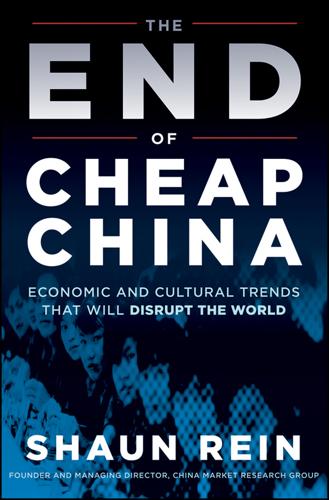
The End of Cheap China: Economic and Cultural Trends That Will Disrupt the World
by
Shaun Rein
Published 27 Mar 2012
When Chinese firms complete acquisitions, not only are most foreign management structures left untouched, but their best practices are often exported to China. China is constantly seeking to improve existing operations in the home market. Take, for instance, when Chinese computer maker Lenovo acquired IBM’s ThinkPad laptop line. There were few layoffs, and Lenovo actually poached senior executives from Dell to run their operations. They did not install senior Chinese officials until the business lost market share in the domestic Chinese market and the founder of Lenovo took back the helm, much as Michael Dell did when Dell’s business faced headwinds.
…
Chinese firms tend to acquire companies to buy brands for introduction into China, to cut the time needed for building brands, and to import technological know-how and management expertise. Unlike Japanese firms, they are less likely to cut the senior management of acquired companies or block the advancement of executives who are not native Chinese. For instance, when Chinese computer maker Lenovo acquired the IBM ThinkPad line, it installed an American chief executive officer. The chairman of Bright Food, which has bought stakes in companies such as Australia’s Manassen, announced that they would keep senior management in place to learn from them. Similarly, when Chinese auto manufacturer Geely bought the Swedish Volvo brand, it also retained senior management and took a comparatively hands-off approach to Volvo’s operations.
…
Paul’s School stability in Africa, lack of China’s economic growth and Chinese government, emphasis on Chinese government security spending gender equality and housing, lack of instability, China’s reaction to renminbi appreciation and Standard & Poor Standing Committee of the Politburo Starbucks students, in China academic research and exchange, need for funding African students, China’s desire for Chinese students, descriptions of Chinese students on American way of life exams and testing, emphasis on extra training taken by foreign students in foreign students in, benefits for international support for Taiwanese support for studying abroad Chinese government support of Chinese students, rise in Chinese students’ desire for subway construction Subway sandwich shop Sudan sugar industry Suning Super Girl (TV show) Suzhou, China Suzuki, Akira T Tabor Academy Taiwan China, diplomatic problems with foreign students in vs. China Foxconn Mandarin language programs in Taobao Target tariffs on Chinese imports by U.S. on luxury goods reduction of for free trade technology companies Tele2 Telenor Tencent Terex test scores, emphasis on ThinkPad 3Leaf Systems Three Tenors concert Tianamen Square protests Tianjin, China TIME magazine Times Square Titanic (film) tourists, Chinese catering and preparing for rates of travel for spending habits of Toyota traffic problems, in China travel Chinese restrictions on Chinese tourists, rates of travel for See also studying abroad Trudeau, Garry Trump, Donald trust, building consumer Tunisia Tushna (friend) Tutsi people Twitter Chinese government blocking of Sina Weibo vs.
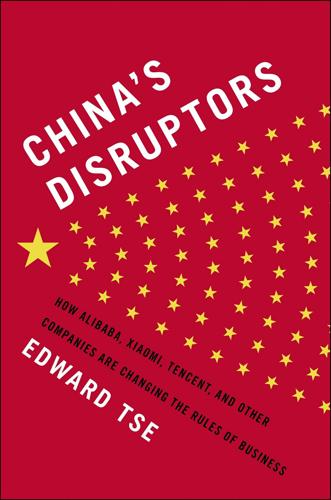
China's Disruptors: How Alibaba, Xiaomi, Tencent, and Other Companies Are Changing the Rules of Business
by
Edward Tse
Published 13 Jul 2015
By then, with further domestic growth hampered by fierce competition with other Chinese PC makers, Yang set a new goal: making Lenovo an international force. IBM’s decision to sell its PC division gave him that chance. Overnight, the deal quadrupled Lenovo’s revenue to $12 billion and made it a global player. The company took ownership of IBM’s “Think” family, including its ThinkPad notebook brand, and bought out IBM’s interest in its joint venture with domestic rival Great Wall Technology, then China’s second-largest PC maker. Lenovo also acquired 10,000 IBM employees, some 2,300 in the United States, mostly product designers, marketers, and sales specialists, and most of the rest in China.
…
Now, set to operate in the red while it digests those two purchases, it has little spare money for research into new products and technologies. Moreover, although its products are found in nearly every country around the world, China remains by far its principal market—responsible for nearly 40 percent of its revenues. In the United States, for example, despite its ownership of the ThinkPad brand, its share of the PC market is only 10 percent; HP and Dell both have around 25 percent. There is no guarantee that Lenovo will be able to repeat its successful integration of IBM’s personal-computer arm with its purchases of Motorola Mobility or IBM’s server business. Still, Lenovo’s progress has been rather like China’s—subject at each point along its trajectory to much questioning and skepticism from impatient observers, and yet quite extraordinary in retrospect.
…
Warren, 93–94 McGrath, Rita Gunther, 99 Manganese Bronze, 133 manufacturing, 109–10 Mao Zedong, 13, 42, 51 Cultural Revolution instigated by, 4, 42, 43 Marks and Spencer, 194 media, 157–62, 213 medical research, 109 Meituan.com, 53, 191 Metallurgical Corporation, 124 MG Rover, 136–37 Mi, 68 see also Xiaomi Miasolé, 123 Microsoft, 112 middle-income trap, 213–14 Mindray Medical International, 122–23, 178 mining, 119, 163 Mitchell, James, 136 motorcycles, 47, 76, 95, 100, 178 Motorola Mobility, 127, 128, 129, 136 Nan Fung, 224 Nanjing Auto, 136 Naspers, 86, 194 National People’s Congress, 43, 81 Navarro, Peter, 9 Nestlé, 194, 196 New Citizens Movement, 170 New York Stock Exchange, 33, 52, 159, 206 Nexen, 119–20 Nike, 195 Nissan, 180 Noah Wealth Management, 12, 150, 153, 212 Nokia, 102, 112 Nortel, 102 open markets, 71, 72–77, 83, 85, 88, 97 Panda W, 205–7, 208, 225 Pan Shiyi, 48 People’s Liberation Army, 101–2 Pepsi, 180 Pew Research Center, 219 piracy, 9, 75, 199 pollution, 115, 209, 212, 217, 221 Pope, Larry, 22 pride, 41, 55, 57, 61, 123 private-equity funds, 79 Procter & Gamble, 12, 175, 177 products, updating of, 97 property rights, 81, 170 Pudong New Area, 224 Putzmeister, 130 Qihoo 360, 84, 113 Qingdao Refrigerator Factory, 4–5 see also Haier Qingqi, 76 QQ, 85, 86, 160, 185, 201 Reckitt Benckiser, 194, 196 Red Packet, 88 Red Rice smartphone, 69 Renault/Nissan, 133 Renren, 52–53 Ren Zhengfei, 11, 43–44, 54, 60, 101–3, 175, 200 Rio Tinto, 119 robots, 110 Roche Diagnostics, 155 Roewe, 137 Russia, 13, 68 doctorates in, 108 oligarchs in, 17 SAIC Motor Corp, 136–37 Samsung, 67, 68, 89, 128 Sany, 178 Sanyo Electric, 7 Schumpeter, Joseph, 163 Sehgal, Aditya, 196 Sequoia Capital, 113, 150 SF Express, 100 shared heritage, 55, 61–64 Shen, Neil, 113 Shenzhen Stock Exchange, 156 Shunwei China, 112 Siemens, 102 Silicon Graphics, 112 Silicon Valley, 18 Silk Road, 57 Sina Weibo, 69, 87–88, 161, 170, 191 Singapore, 68, 100, 155 SingPost, 100 Sino Iron mine, 124 Sinovac Biotech, 109 Sky City, 217–18, 221 Skype, 129 smartphones, 9, 11, 67–70, 75, 89, 128, 135, 139 Smithfield Foods, 22, 120 Softbank, 37, 156, 194 SOHO China, 48 Sohu, 158, 159 sourcing networks, 188 South China Morning Post, 37 South Korea, 121, 141 special economic zones, 43 Standard Chartered, 151 State Administration of Press, Publication, Radio, Film, and Television, 219 State Council, 215 state-owned enterprises, 9–10, 13–14, 36, 40, 76, 80, 119, 137, 158, 164, 176, 179–80, 209, 213 strategy+business, 49–50 Su, Sam, 196 subsidies, 9, 163 Surprise (series), 160 Sze Man Bok, 43, 176, 177 Tabarrok, Alex, 113 Taikang Life Insurance, 45, 55, 148 Taiwan, 68, 121, 214 Taizhou, 44 Tang dynasty, 28–29, 229 Tango, 135 Tan Wanxin, 13 Taobao, 34–35, 38, 40, 184 TCL, 76, 84, 148 Tedjarati, Shane, 190, 196 telecoms, 103–4, 122, 178 television, 76, 158, 178, 219 Tencent, 11, 18, 39, 52, 60, 80, 81, 83–84, 85–88, 90, 101, 135, 136, 151, 158, 159, 161, 162, 185, 191, 201, 222, 225 founding of, 49, 85 innovation by, 94, 113 Naspers’ purchase of stake in, 86, 194 overseas listing of, 89 revenue of, 87 Tenpay system of, 36 Tenpay, 36, 87 Tesco, 180 Tetra Pak, 196 ThinkPad, 128 Third Plenum of the 18th Party Congress, 211, 214, 215 Thomas Group, 177–78 3D printing, 110–11 360 Mobile Assistant, 84 Tian, Lawrence, 147–48 Tiananmen Square, 44 Tingyi, 180 Tmall, 36, 38, 87, 184, 195, 206 Tmall Global, 195 Toyota, 133, 180 TPG Capital, 225 transport, 115 Tsai, Joe, 37 Twitter, 87, 222 United Kingdom, doctorates in, 108 United States, 18 doctorates in, 108 R&D spending in, 107 technological supremacy of, 106 urbanization, 28, 115, 214 Uyghurs, 53 Vanke, 148 Vantone Holdings, 46, 148 vehicles, 115 venture capital, 79 Vipshop, 84, 113, 206 Volkswagen, 133, 137, 179, 180 Volvo, 123, 131, 132, 133, 134, 138, 185 wage pressure, 98 Wallerstein, David, 136 Wal-Mart, 96, 194 Wanda E-Commerce, 88 Wang, Diane, 12, 57 Wang, Victor, 145–47, 167, 168–69, 171 Wang Jianlin, 48, 88, 172 Wang Jingbo, 12, 150, 152 Wang Shi, 148 Wang Wei, 147–48 Wang Xing, 52–53 Wanxiang, 130, 134, 178 Ward, Stephen, 126 water, 6, 25, 106, 188 WeChat, 18–19, 84, 87, 88, 139, 160, 185, 191, 201, 212 Wen Jiabao, 147 WhatsApp, 18–19, 191 WH Group, 21–22, 120 Wong, Jessica, 205–7, 208, 210, 214, 225 World Economic Forum, 147 World Health Organization (WHO), 114 World Trade Organization, 6, 16, 37–38, 47, 122, 222 Xiangcai Securities, 150 Xiaomi, 11, 12, 57, 67–70, 75, 77, 89, 101, 128, 139, 162, 191–92, 197, 226 innovation by, 94, 112, 113 Xiaonei, 52–53 Xi Jinping, 78, 80, 152, 160, 165, 167, 168, 170, 181, 210–11, 213, 223, 229 Xu, William, 222 Xue, Charles, 161, 170 Xu Lianjie, 12, 43, 53, 175–78, 200 Yabuli, 145, 147, 149, 166 Yahoo, 194 Yang Yuanqing, 11, 125–26, 128, 148 Yao, Frank, 205–7, 210, 214, 225 Yihaodian, 11, 89, 95–97, 194 Yinlu, 194 Yoga IdeaPad, 127 Youku Tudou, 84, 114, 158–60, 161, 162, 209, 212, 218 YouTube, 158, 218 yuan, 9 Yu’e Bao, 39, 40, 153, 212 Yu Gang, 11, 94–96, 100, 112 Yum!
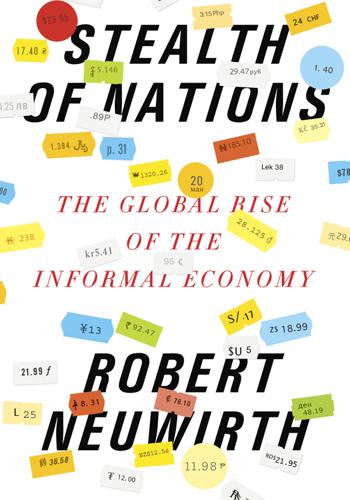
Stealth of Nations
by
Robert Neuwirth
Published 18 Oct 2011
Smugglers came to the rescue, and police have uncovered tunnels under the Sham Chun where products moved across the border with no control. Another aspect of Hong Kong–to–China smuggling involves laptop computers. Students and professionals who want good machines report that some major-brand laptops—particularly HP, Sony, and ThinkPad—sell lower-quality machines in China than are available in Hong Kong and the West. And these machines are also more expensive in the People’s Republic. For instance, ThinkPad computers, which were once part of the IBM empire and are now manufactured by the Chinese firm Lenovo, are generally one-third cheaper in the United States and Hong Kong than they are in China. This price and quality differential has made smuggling a new distribution channel.
…
in China, 5.1, 5.2–5.3, 5.4–5.5, 5.6, 5.7, 5.8 costs of, 5.1–5.2, 5.3–5.4 of DVDs, 1.1–1.2, 1.3–1.4, 1.5, 6.1 fashion, 5.1, 5.2–5.3 history of, 5.1–5.2, 5.3–5.4, 5.5 impact on companies whose goods are copied, 5.1 impact on System D profit margins, 5.1–5.2 literary, 5.1, 5.2–5.3, 5.4 mobile phone, 5.1, 5.2–5.3 music, 1.1, 5.1–5.2, 5.3–5.4, 6.1 online, 5.1 philosophical view of, 5.1–5.2 policing of, 5.1, 5.2 profitability of, 1.1, 5.1, 5.2, 5.3, 5.4, 5.5, 5.6, 10.1 quality variation in, 5.1 software, 5.1–5.2 use of force in, 12.1 Polanyi, Karl, 2.1–2.2 politicians, System D criticism by, 1.1, 7.1, 8.1, 10.1 Pollin, Robert, 12.1 Poor Laws, 9.1 Portes, Alejandro, 9.1–9.2, 10.1, 11.1 Positivo, 11.1 poverty, prejudice against, 8.1 press, System D criticism in, 2.1–2.2, 8.1–8.2, 8.3 Procter & Gamble, 7.1–7.2, 10.1, 12.1 Prohibition, 6.1 Proudhon, Pierre-Joseph, 9.1–9.2, 9.3 Provincial Congress of Massachusetts, 12.1–12.2 public services, System D’s provision of, 2.1, 3.1–3.2, 9.1, 12.1–12.2 publishing industry illegal sales in, 8.1 piracy in, 5.1, 5.2–5.3, 5.4 Puma, 5.1 Pure Water, 3.1–3.2, 12.1, 12.2, 12.3 pushcarts as an economic entrypoint, 9.1 in New York, 8.1–8.2 Quark, 5.1 Radiohead, 5.1 Ramirez, Juan V., 6.1–6.2, 6.3, 10.1, 11.1 Raustiala, Kal, 5.1 recycling industry, 1.1, 9.1–9.2, 12.1, 12.2–12.3, 12.4–12.5 cartels in, 12.1–12.2 see also scavengers Reuters, 8.1 Revolutionary War, 10.1, 12.1 Rimbaud, Arthur, 4.1–4.2 Rockefeller, John D., 9.1 Rogers, Will, 6.1 Rome, ancient conflict resolution in, 12.1 street markets in, 3.1 Roque Santeiro, 10.1 Rothbard, Murray, 9.1, 9.2–9.3, 12.1 Rua 25 de Março Chinese merchants at, 1.1–1.2 daily life at, 1.1–1.2 development plans for, 10.1–10.2 licensed vendors at, 1.1, 1.2 pirate DVD market at, 1.1–1.2, 1.3–1.4, 1.5 policing of, 1.1, 1.2, 1.3 products sold at, 1.1–1.2, 1.3, 1.4–1.5, 1.6, 1.7, 1.8, 1.9–1.10 profitability of, 1.1, 1.2, 1.3, 1.4, 1.5 rules at, 1.1–1.2 sanitation at, 1.1 smuggling into, 6.1, 6.2, 6.3 unlicensed vendors at, 1.1–1.2, 1.3, 1.4, 1.5 Runyon, Damon, 8.1–8.2 Saboru, Andrew, 3.1, 3.2, 3.3, 3.4–3.5, 7.1, 11.1 sacoleiros, 6.1, 6.2, 6.3, 6.4, 6.5 Safadi, Khaled T., 12.1 Saltzberg, Joanne, 8.1, 8.2 San Francisco, Calif., food industry in, 8.1–8.2, 12.1 San Salvador, El Salvador, System D crackdown in, 10.1 Sanwo-Olu, Jide, 10.1 Sanyuanli, 4.1, 4.2, 5.1, 12.1 São Paulo, Brazil recycling in, 1.1, 12.1–12.2 smuggling into, 6.1–6.2, 6.3, 6.4, 6.5 street peddling in, 1.1 see also Rua 25 de Março Sarkozy, Nicolas, 8.1 Saro-Wiwa, Ken, 2.1 Saviano, Roberto, 5.1 scavengers, 3.1, 3.2, 3.3–3.4, 12.1 profitability of, 3.1–3.2, 12.1–12.2, 12.3, 12.4 see also recycling industry Scavenger’s Association, 3.1 Schneider, Friedrich, 2.1, 2.2, 8.1 Schumpeter, Joseph, 2.1, 6.1 Schwartz, Sigmund, 8.1–8.2 Seagram’s, 6.1 Sears, Dick, 8.1 Sears, Roebuck & Co., 8.1 Self Employed Women’s Association (SEWA), 12.1 Sengupta, Arjun, 12.1 Sepeda, Genoveva, 8.1–8.2 September 11, 2001 terrorist attacks, 12.1, 12.2 Shakespeare, William, 5.1–5.2 shan zhai, 5.1 Sheetrock, 12.1 Shenzhen, China, smuggling from, 6.1–6.2 shoes, 10.1–10.2 Shopping Mundo Oriental, 1.1 Siemens, 12.1 size of businesses, 2.1, 10.1–10.2 Slim, T-Bone, 9.1 Slot Systems Limited, 3.1 smartphones, 6.1, 8.1 Smith, Adam, 2.1, 4.1, 5.1, 9.1–9.2, 12.1 smuggling, 1.1, 2.1, 3.1, 4.1, 4.2, 5.1, 6.1–6.2, 10.1–10.2, 12.1, 12.2 computer, 6.1–6.2, 6.3, 6.4–6.5, 11.1–11.2, 11.3, 11.4, 11.5 conditions leading to, 6.1 history of, 6.1–6.2, 6.3 persistence of, 6.1 potential danger of, 12.1 profitability of, 6.1, 6.2, 6.3–6.4, 10.1–10.2, 11.1 see also Ciudad del Este, Paraguay Social Compact, 8.1 South Africa, System D in, 7.1, 12.1–12.2 Southern Metropolis Daily, 4.1 Soviet Union, 12.1 Soyo, 11.1 Sozaboy (Saro-Wiwa), 2.1 Spain, System D in, 8.1 Sprigman, Christopher, 5.1 squatter communities, 3.1 formalization of, 11.1, 11.2 System D’s reach into, 2.1 Stalin, Joseph, 12.1 Standard, 10.1, 12.1 Stanley, Frederick T., 8.1 Stanley Works, 8.1 State Department, U.S., 12.1 Stiglitz, Joseph, 2.1, 7.1 Strand bookstore, 8.1 street markets, 1.1–1.2, 2.1, 9.1 conflict resolution in, 12.1–12.2 history of, 1.1, 2.1, 3.1–3.2, 5.1, 8.1–8.2, 12.1 see also Alaba International Market; Ikeja Computer Village; Ladipo Market; Maxwell Street Market; Oshodi; Rua 25 de Março; umbrella stands street peddling criticism of, 8.1–8.2, 10.1, 12.1–12.2 in food industry, 1.1, 1.2, 1.3, 3.1, 3.2, 8.1–8.2, 8.3–8.4 hardware for, 1.1, 1.2 in India, 10.1 Nigerian crackdown on, 10.1 rewards of, 1.1–1.2, 9.1 in United States, 8.1–8.2 worker exploitation in, 8.1–8.2 Street Vendor Project, 12.1 Stroessner, Alfredo, 6.1 swap meets, 8.1, 8.2 Swissinfo, 8.1 Switzerland, System D in, 8.1, 8.2 System D advancement in, 3.1–3.2 American tradition in, 8.1–8.2 banks’ relations with, 3.1, 7.1–7.2, 11.1, 12.1, 12.2–12.3 benefits of, 2.1–2.2, 8.1, 9.1, 9.2, 9.3, 9.4, 9.5–9.6 business interaction with, 1.1, 1.2–1.3, 1.4, 2.1–2.2, 2.3, 4.1, 5.1, 7.1–7.2, 8.1–8.2, 11.1–11.2, 12.1–12.2 business investment in, 7.1, 7.2, 7.3–7.4 business model in, 7.1, 9.1–9.2, 10.1, 11.1 cash basis of, 1.1, 4.1, 5.1, 7.1, 12.1, 12.2 children in, 2.1, 8.1, 12.1–12.2, 12.3 class-based bias against, 8.1–8.2 crime and, 2.1, 2.2, 12.1, 12.2, 12.3, 12.4, 12.5, 12.6, 12.7 criticism of, 1.1, 2.1, 2.2–2.3, 7.1–7.2, 8.1–8.2, 9.1–9.2, 9.3, 10.1–10.2, 10.3, 10.4–10.5, 10.6 definition of, 2.1–2.2, 2.3, 2.4 distribution chains in, 7.1–7.2, 7.3, 7.4 formalization of, 8.1, 8.2–8.3, 8.4, 8.5, 11.1–11.2, 12.1–12.2 global exchange rates’ effect on, 4.1–4.2 global trade in, 1.1, 1.2, 2.1, 2.2, 3.1, 3.2, 3.3, 4.1–4.2, 5.1–5.2, 5.3, 5.4–5.5, 10.1–10.2, 12.1, 12.2–12.3; see also smuggling government crackdowns on, 6.1, 10.1–10.2, 10.3–10.4, 10.5–10.6 government interaction with, 3.1, 3.2, 3.3, 3.4, 3.5, 4.1–4.2, 4.3–4.4, 5.1–5.2, 6.1, 6.2, 10.1–10.2, 11.1, 12.1, 12.2, 12.3, 12.4, 12.5, 12.6, 12.7, 12.8, 12.9–12.10, 12.11–12.12 government investment in, 12.1–12.2 government regulation of, 12.1–12.2, 12.3–12.4 growth in, 3.1–3.2, 3.3–3.4, 3.5, 3.6–3.7, 4.1, 9.1–9.2, 9.3, 9.4, 10.1–10.2, 10.3, 11.1, 12.1–12.2 ideological neutrality of, 9.1–9.2 immigrants in, 8.1, 8.2, 8.3–8.4, 8.5, 8.6–8.7 innovation and risk taking in, 10.1–10.2, 12.1 internal view of, 2.1, 2.2, 2.3–2.4 labor issues in, 4.1, 7.1, 7.2, 8.1, 8.2, 10.1–10.2, 12.1, 12.2, 12.3, 12.4–12.5, 12.6–12.7 monetary value of, 1.1, 2.1, 2.2–2.3, 3.1, 7.1, 8.1–8.2, 8.3, 12.1 organization in, 3.1, 3.2, 3.3, 3.4, 9.1, 9.2, 10.1, 12.1, 12.2–12.3, 12.4, 12.5–12.6, 12.7, 12.8–12.9, 12.10, 12.11, 12.12 political involvement of, 2.1, 12.1, 12.2 poor workmanship in, 4.1, 4.2 postcolonial emergence of, 9.1–9.2 profitability of, 1.1, 1.2, 1.3, 1.4, 1.5, 1.6, 3.1, 3.2–3.3, 3.4, 3.5, 3.6, 3.7, 3.8–3.9, 3.10, 4.1–4.2, 4.3, 4.4, 5.1, 5.2, 5.3, 5.4, 5.5, 5.6, 6.1, 6.2, 6.3–6.4, 7.1, 7.2, 8.1, 8.2–8.3, 8.4, 8.5, 9.1, 10.1–10.2, 10.3, 11.1, 12.1–12.2, 12.3, 12.4, 12.5 public services provided by, 2.1, 3.1–3.2, 9.1, 10.1 recognition of, 9.1–9.2, 12.1, 12.2–12.3 size of, 1.1, 2.1, 2.2, 2.3, 9.1, 12.1, 12.2, 12.3–12.4 tax evasion in, 1.1, 1.2, 4.1, 4.2–4.3, 4.4, 5.1, 6.1–6.2, 8.1, 10.1, 10.2, 12.1 tax revenue lost to, 8.1, 8.2, 12.1 2008/2009 financial crisis resilience of, 2.1–2.2 women in, 12.1 see also Ciudad del Este, Paraguay; Guangzhou, China; Lagos, Nigeria; street markets; specific industries taxation relationship to smuggling, 6.1–6.2 social contract implicit in, 4.1–4.2, 10.1–10.2 tax breaks for developers similar to System D tax avoidance, 10.1–10.2 Tech Data Worldwide, 11.1 technology Chinese retailing of, 6.1 global impact of, 9.1, 9.2 System D in spread of, 2.1, 3.1–3.2, 3.3, 9.1–9.2, 12.1 see also electronics industry Tehelka, 12.1 Tein, Michael, 12.1–12.2 Temple, Peacemaker, 3.1 terrorism, accusations of funding through System D, 12.1–12.2 Thebes, 5.1 Theory of Moral Sentiments, The (Smith), 5.1, 9.1–9.2 ThinkPad, 6.1 3+1 Group on Tri-Border Area Security, 12.1 Tijuana, Mexico, discount drug market in, 6.1–6.2 Tinubu, Bola, 10.1 Tokyo, Japan, fish market in, 12.1 Tonel Franklyn Limited, 3.1 Tonson, Jacob, 5.1–5.2 trade Aristotle’s view on, 5.1 in Muslim thought, 5.1 transportation industry, 3.1–3.2, 3.3–3.4, 4.1, 10.1–10.2, 12.1 Tsukiji market, 12.1 UAC of Nigeria, 7.1–7.2 Uche, Emanuel, 3.1 umbrella stands, 7.1, 7.2–7.3 Unger, Roberto Mangabeira, 9.1–9.2, 9.3, 12.1 Unilever, 7.1 United Citizen Peddlers’ Association, 8.1 United Independent Vendors Movement, 10.1 United Kingdom, see Great Britain United Nations’ Inter Press Service, 10.1 United Nations’ World Institute for Development Economics Research, 9.1 United States big-box retailing in, 7.1 Chinese trade with, 4.1 GDP of, 2.1 low-income consumers in, 7.1 Nigerian used car imports from, 4.1–4.2 post–World War II economic development in, 11.1–11.2 sales tax avoidance in, 8.1 small business in, 2.1, 7.1 smuggling in, 6.1–6.2, 6.3, 6.4 software piracy in, 5.1 street peddling in, 8.1–8.2, 12.1–12.2 System D in, 8.1–8.2, 8.3–8.4 terrorism allegations by, 12.1–12.2 2008/2009 financial crisis in, 8.1, 8.2 undeclared income figures for, 8.1–8.2 workforce in, 8.1 World War II profiteering in, 6.1 Univinco, 1.1, 10.1–10.2 urbanization, 3.1–3.2 Urias, Claudia, 1.1, 1.2, 9.1 Van Heusen, 8.1 Vectro, 5.1 Vicks VapoRub, 12.1 Vietnam, 4.1 visas, 4.1, 12.1–12.2 Walker, Robert, 5.1–5.2 Walker, Stanley, 8.1 Walmart, 7.1, 10.1, 10.2–10.3 war, smuggling during, 6.1–6.2 Ward, Ned, 5.1 Washington, D.C., System D income in, 8.1 watches, counterfeit, 5.1 water system, Lagos government monitoring of, 12.1 lack of municipal supply, 3.1–3.2 wealth gap, 9.1–9.2, 9.3, 12.1 Wealth of Nations, The (Smith), 1.1, 2.1, 2.2, 3.1, 4.1, 5.1, 6.1, 7.1, 8.1, 9.1, 9.2, 10.1, 11.1, 12.1 Weber, Max, 3.1 Wei, Alex, 2.1, 10.1, 11.1, 11.2, 11.3, 11.4 Wen, 4.1–4.2 Whimzies: or, a New Cast of Characters (Braithwaite), 8.1 Whole Foods, 8.1 wholesalers, 7.1 Wholesome Bakery, 8.1 Windows, 5.1 Winstanley, Gerrard, 9.1 women, 12.1 Women in Informal Employment: Globalizing and Organizing (WIEGO), 11.1, 12.1 World Bank, 9.1 World War II, profiteering in, 6.1 XYG (Xinyi Glass), 3.1 Zara, 7.1–7.2 see also Inditex Zeltner, Louis, 8.1 Zhang, Ethan, 2.1–2.2, 4.1–4.2, 5.1–5.2 Zigas, Caleb, 8.1, 8.2 Zulehner, Carl, 5.1 ABOUT THE AUTHOR ROBERT NEUWIRTH is the author of Shadow Cities: A Billion Squatters, a New Urban World.
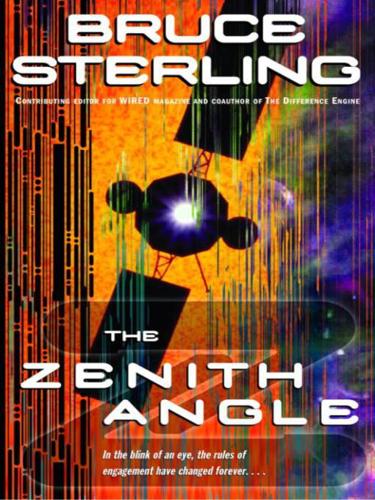
The Zenith Angle
by
Bruce Sterling
Published 27 Apr 2004
Besides, Van had to do something practical with his money. Van was making money, and not just a lot of money. Van was the VP for Research and Development at Mondiale. Van was making a weird amount of money. The TV muttered through a headache commercial, obscuring baby Ted’s eager slurps from Dottie’s rubber spoon. Van tapped at his trusty ThinkPad and checked the titles of the 117 pieces of e-mail piled up for him behind Mondiale’s corporate firewall. With an effort, Van decided to ignore his e-mail, at least until noon. Because Dottie was home with him. Dottie was sleeping with him, and lavishing her sweet attentions on him. Dottie was cooking and cleaning and changing diapers.
…
Instead, he picked intently at four loose Cheerios with his thumb and forefinger. Van sensed that picking up and eating a Cheerio was a major achievement for Ted. It was the baby equivalent of an adult landing a job. Van ran his fingers through his thick sandy beard, still wet from the morning shower. He set his ThinkPad firmly aside to confront an unsteady heap of magazines. Junk-mail catalog people had gotten wind of Van’s huge paycheck. For them, a computer geek with a new house and new baby was a gold mine. Van didn’t enjoy shopping, generally. Van enjoyed mathematics, tech hardware, cool sci-fi movies, his wife’s company, and bowling.
…
Van scowled. “Hey, that place has the worst luck in the world.” Dottie looked puzzled and upset. Even Ted looked morose. “I mean that crowd of bad guys with the big truck bomb,” Van explained. “They tried to blow that place up once.” Dottie winced. It was not her kind of topic. Van fetched up his ThinkPad from the floor. He figured he had better surf some Web news. These local TV guys had a lousy news budget. Covertly, Van examined his e-mail. Thirty-four messages had arrived for him in the past two minutes. Van flicked through the titles. Security freaks from the cyberwar crowd. Discussion groups, Web updates.
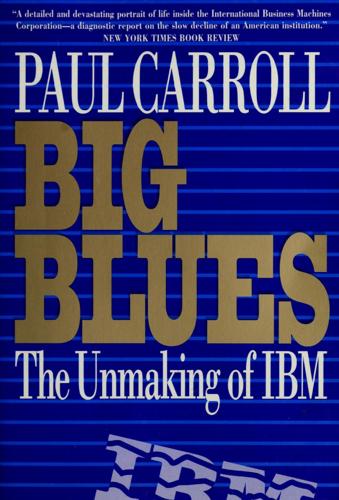
Big Blues: The Unmaking of IBM
by
Paul Carroll
Published 19 Sep 1994
W hen it came time for IBM to announce its pen com puter in an adjoining room, Kathy Vieth, the executive making the presentation, tried to maintain the enthusiasm, but her script, vetted by the lawyers, made that hard. O ne of h er big points was that the pen com puter 324 PAUL CARROLL exemplified IB M ’s newfound willingness to throw out all the rules, so much so that this was the first product in IBM ’s history that would be known only by its name, the ThinkPad, and wouldn’t carry a product num ber. In fact, the press release did list the ThinkPad as the 2521. W hen Vieth built to what was meant to be a rousing conclusion, she delivered in h er deepest, most sincere voice the line, “W e are firmly on a path toward m eeting custom er requirem ents.” That lame line in April 1992 was the high-water mark in IBM ’s involvement with pen computing.
…
Through its joint venture with Apple and Motorola, IBM also began producing chips based on the RS/6000 workstation’s central processor that provide the most credible challenge in years to Intel’s dominance of the processor market. In personal computers, IBM finallv regained some credibility in laptops and notebook computers in 1993 with its ThinkPad line. In addition, IBM seemed to have finally cut costs enough to more or less match competitors and had figured out the technologv-growth pattern of the industry sufficiently to introduce new technology at about the same time as competitors. In terms of strategy, IBM also seemed to be on the right path— trying to regain control of the key processor and software technologies.
…
See Microsoft modems, 132, 135 1990 success of, 241-42 9370 system, 151-52 Nobel Prizes to IBMers, 340 OfficeVision software project, 225-28, 311 Opel era, 58-66 OS/2 software, 94-119, 152, 170-71, 180- 90, 193-96, 214-17, 226-27, 230, 235, 236, 23839, 259, 260-63, 277-87, 288, 331 PC development project, 21-23, 26-42, 44 PCjr, 68-70, 180, 206, 245, 247 and pen computing, 319-24 and portable computers, 70-71 and price wars in PCs, 318-19, 324, 329-35 printer business, 132-34, 303-4 Prodigy information service, 248-52 PS/1 computer, 245-48 PS/2 computer, 136-43, 246 Quality program, 243-45 rating svstem for employees, 269-70, 341-42, 360-61 research and development budget cuts, 339-45 RISC chip, 200-202, 205 RS/6000 workstation, 198-213, 342 RT PC, 205-6 SAA blueprint, 110-11, 112, 113 SCAMP computer, 22 Series 1 minicomputer, 27, 28 Selectric typewriters, 302-3 severance offers and job cuts, 159-63, 213, 222, 269-70, 277, 289, 324, 327-29, 344, 360-61, 362, 363, 364-65 software companies, investments in, 222-25, 229-30 stockholders’ losses, 365-66 stock picks bv, 223-25, 229-30 structure and scope of corporation, 20-21 summary of rise and fall, 2 -7 ThinkPad computer, 323-24 3090 mainframes, 54-55 360 mainframe, 52—53, 108 TopView software, 86, 88, 104, 105, 111 True Blue underground newsletter, 362-63 376 IBM (con/.) ValuePoint PC line, 331-35 Windows software. See Microsoft XT computers, 68, 135-36 ICL Company, 4 Imlav, John, 231 InfoWorld. 82, 88, 368 Intel Company, 34, 36, 37, 71, 72, 73, 75, 103, 111, 119,'120, 122, 124, 125-31, 143, 149, 207, 236, 317, 349, 369 80386 chip, 120-25, 129-31, 142, 146, 236 Intelligent Electronics, 247 Investors Daily, 338 Japanese companies, 5, 60, 61, 129, 132, 133, 170, 203, 207, 236, 242, 243, 253, 256, 326, 342, 343-44, 345, 348, 353-54 Javers, Ron, 302 Jobs, Steve, 4, 19, 32, 60, 78, 86-87, 148, 184-85 Johnson & Johnson, 354 Joy, Bill, 203 Kahn, Philippe, 118 Kalis, Dave, 354 Kaplan, Jerry, 319-22, 324 Kapor, Mitch, 77-79, 145, 320 Katzenbach, Nicholas, 54, 58, 154, 198 Kaypro Company, 4, 36 Keams, David, 51 Kfoury, Ed, 105-6 Khosla, Vinod, 203 Kilbv, Jack, 125, 126 Kildall, Gary, 18, 41 King, Sue, 324 Kirk, Charles, 49 Kleder, John Dean, 363-64 Kleiner Perkins, 77 Kodak Company, 5 Kowal, Charles, 365 Kuehler, Jack, 176, 183-84, 186, 198, 199, 200, 201, 206-9, 232, 234, 236, 240, 242-43, 245, 257, 259, 260-61, 262, 273, 289-92, 293295, 297, 298, 309-10, 315, 344, 346, 370 LaBant, Bob, 275, 276-77 Lally, Jim, 77-78 Lance, Bert, 54 Lautenbach, Dan, 165 Lautenbach, Ned, 165, 166, 222-25, 229 Lautenbach, Terrv, 164-66, 183, 222, 223, 273, 274, 275 Lawten, Bob, 253-56 Learson, Vin, 51, 54 LeGrande, Doug, 283-84 Letwin, Gordon, 73, 103, 186 Levenson, Marc, 342-45 Liddle, Dave, 189, 193, 310 Lillie, Ray, 359-60 Lotus Development, 142, 145, 189, 228, 240, 320 1-2-3 software, 36, 39, 77-78 Low, Paul, 344 Lowe, Bill, 2, 8, 18-19, 21-23, 26, 27, 29, 36, 79, 81-83, 84-85, 88-91, 93, 99, 104-5, 106, 111-13, 114-16, 118, 119, 121-22, 124-25, 131, 132, 135, 136-40, 142-43, 149-50, 152, 168, 171, 183, 213, 223, 227, 237 INDEX Lucente, Angelo, 166 Lucente, Ed, 132, 161-64, 166, 167-68 McCarthy, Jud, 254-55 McCracken, Bill, 330 MacDonald, James F., 1.56 McKenna, Regis, 293-94 McKinsey consulting, 351 McNealy, Scott, 203-4, 316 Management Science America, 231 Mandresh, Dan, 256 Mann, Marvin, 306, 309 Manzi, Jim, 189, 194, 240 Maples, Mike, 186-87 Markell, Bob, 94-95, 96, 114-16 Markkula, Mike, 148 Martin, Hal, 26 Martinson, Jay, 114 MCA Company, 251 Metaphor software, 189, 310 Metcalfe, Bob, 368 Micrografx Company, 279-80 Microsoft, 4, 5, 68, 71, 73, 77, 82-83, 143, 152, 203, 223, 228, 310, 312, 316, 319-20, 331, 349, 369, 370, 371.
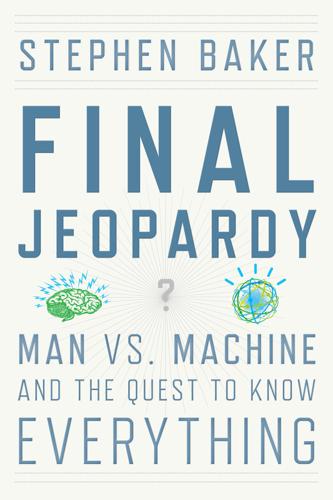
Final Jeopardy: Man vs. Machine and the Quest to Know Everything
by
Stephen Baker
Published 17 Feb 2011
This deadline compelled Ferrucci and his team to assemble their machine with existing technology—the familiar silicon-based semiconductors, servers whirring through billions of calculations and following instructions from lots of software programs that already existed. In its guts, Blue J would not be so different from the ThinkPad Ferrucci lugged from one meeting to the next. Its magic would have to come from its massive scale, inspired design, and carefully tuned algorithms. In other words, if Blue J became a great Jeopardy player, it would be less a breakthrough in cognitive science than a triumph of engineering. Every computing technology Ferrucci had ever touched, from the first computer he saw at Iona to the Brutus machine that spit out story plots, had a clueless side to it.
…
An entire corporate identity unit at IBM specialized in naming products and services. A generation earlier, when the company still sold machines to consumers, some of the names this division dreamed up became iconic. “PC” quickly became a broad term for personal computers (at least those that weren’t made by Apple). ThinkPad was the marquee brand for top-of-the-line business laptops. And for a few decades before the PC, the Selectric, the electric typewriter with a single rotating type ball (which could “erase” typos with space-age precision) epitomized quality for anyone creating documents. With IBM’s turn toward services, the company risked losing its contact with the popular mind—and its identity as a hotbed of innovation.
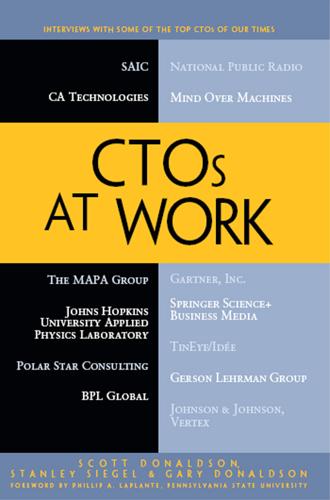
CTOs at Work
by
Scott Donaldson
,
Stanley Siegel
and
Gary Donaldson
Published 13 Jan 2012
About two days after that, I get called in to review a project to build a B2B (business to business) system based on WebSphere and Software Group products. It took 14 physical machines to build and run the “Hello World” business process. I didn't know what the right answer was, but I knew it was less than 14. When I left, it would all run on a ThinkPad. It was a big ThinkPad, but it would all run on a ThinkPad. And that was all just advice and consent, and the fact that when I gave advice and consent, my technical colleagues would hash it out and figure out how to do it; then it was game time. Let's go and let's do it. S. Donaldson: Right. Ferguson: In the entire time I was the chief architect for Software Group, I only once in four years had to say the words, “I've heard all the people, but we're going to do it this way.”

Garbage Land: On the Secret Trail of Trash
by
Elizabeth Royte
Published 1 Jan 2005
Cell phones have their own periodic arsenal: arsenic, antimony, beryllium, cadmium, copper, lead, nickel, and zinc. Exposure to these metals has been shown to cause abnormal brain development in children and nerve damage, endocrine disruption, and organ damage in adults. Tapping away at my keyboard was probably doing me little harm, I figured, but it wouldn’t take much for my sleek little ThinkPad to morph into a corrosive contaminant. Crushed in a landfill, it would leach metals into soil and water (remember, all landfills eventually leak); in an incinerator, it would exhale noxious fumes, including dioxins and furans, that would taint both fly and bottom ash. Everything must to go somewhere—the environmental scientist Barry Commoner said it long ago, and I understood it implicitly now.
…
To mail my laptop, dead router, and one printer would cost me sixty-four dollars, minus the box and packing materials. (The company puts postage-paid labels and envelopes in some printer cartridge boxes.) When I asked staffers at one of the largest computer merchants in New York City about taking back my gently used IBM ThinkPad, they said they didn’t do it, didn’t know anything about it, and had never before been asked about it. For its part, Massachusetts bans televisions and computers from landfills. Instead, it contracts with a company called ElectroniCycle, based in Gardner, Massachusetts, to process its e-waste. Harvesting material from drop-off events and retailers, ElectroniCycle recovers ten million pounds of electronics a year: technicians refurbish between 5 and 10 percent of their computers for resale; send another 5 to 10 percent to specialty repair houses; and smash the rest into fifty different categories of scrap, including plastic, copper, aluminum, barium glass, and leaded and mixed glass (which is recycled back into cathode-ray tubes).
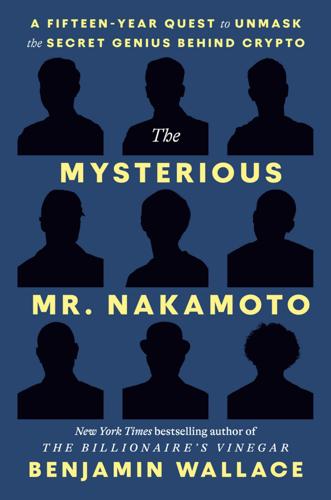
The Mysterious Mr. Nakamoto: A Fifteen-Year Quest to Unmask the Secret Genius Behind Crypto
by
Benjamin Wallace
Published 18 Mar 2025
Wright was still hesitant. “So I’m listening to all this,” Stefan Matthews would tell me later, “and I said, ‘Hey guys, let’s try to find a solution if we can.’ ” Just before 6 p.m., MacGregor called his assistant and instructed her to bring a new, factory-sealed laptop to the hotel. She bought an IBM ThinkPad at Curry’s, an electronics store at Oxford Circus, and hurried with it to Covent Garden. There were further delays as the new computer was unpacked and booted up. It then took some time for Wright to configure the machine, log onto the hotel Wi-Fi, and download a Bitcoin-wallet app called Electrum, which had a feature allowing anyone to demonstrate control of a private key by typing a message and digitally signing it.
…
GO TO NOTE REFERENCE IN TEXT “Maybe you and I could get to know each other better”: O’Hagan, “Satoshi Affair.” GO TO NOTE REFERENCE IN TEXT “you’ve just been alone for way too long”: O’Hagan, “Satoshi Affair.” GO TO NOTE REFERENCE IN TEXT Wright phoned Ramona: O’Hagan, “Satoshi Affair.” GO TO NOTE REFERENCE IN TEXT IBM ThinkPad: Judgment, COPA v. Wright. GO TO NOTE REFERENCE IN TEXT It then took some time: Andresen, deposition, February 26, 2020, KW. GO TO NOTE REFERENCE IN TEXT his eyes teary: Andresen, deposition, February 26, 2020, KW. GO TO NOTE REFERENCE IN TEXT A Little Bit of Controversy for Fun “If I sign myself Jean-Paul Sartre”: “Sartre on the Nobel Prize” (translated by Richard Howard), The New York Review of Books, December 17, 1964.
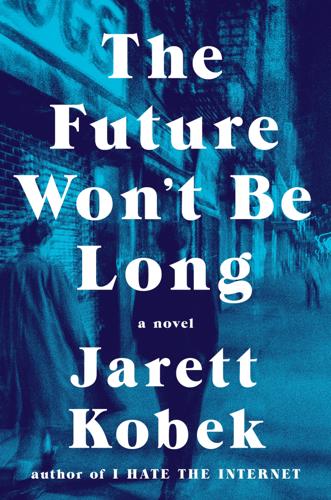
The Future Won't Be Long
by
Jarett Kobek
Published 15 Aug 2017
—And by their fruits ye shall know them. OCTOBER 1996 Baby Goes on a Book Tour Before I embarked upon my tour of America, I bought a new computer, an IBM ThinkPad 560 with an 800-megabyte hard drive and 100mhz Pentium processor. The total cost, tax included, was a steal at $2,300. I’d gotten a deal through a friend of Parker’s. Compared with models of similar power, the cost was exorbitant, but I’d been assured that the ThinkPad offered a durability missing from other models. —You can beat the living shit out of the thing, said Parker. Everything else is a toy. Besides, Saving Anne Frank was doing well.
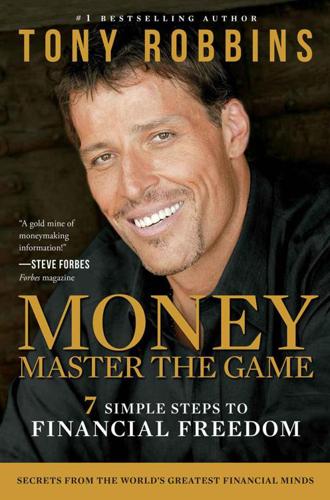
MONEY Master the Game: 7 Simple Steps to Financial Freedom
by
Tony Robbins
Published 18 Nov 2014
As Ray Kurzweil explains, our genes are like software programs that can be changed to switch behaviors on and off. What does that mean? It means that we can use cells as little machines and program them to build other things—including more of themselves. “This software makes its own hardware. No matter how I program a ThinkPad, I will only have one ThinkPad tomorrow morning, not a thousand ThinkPads. But if I program a bacteria, I will have a billion bacteria tomorrow,” Juan said. It sounds insane, like something out of a movie, but—as I keep reminding myself—this isn’t science fiction. The technique is already being used to produce clothing. “All the stuff you are now wearing—that breathable, stretchable stuff like Under Armour?”
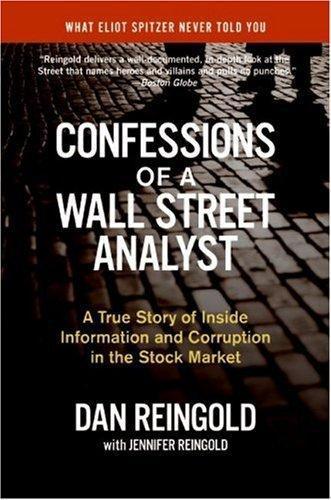
Confessions of a Wall Street Analyst: A True Story of Inside Information and Corruption in the Stock Market
by
Daniel Reingold
and
Jennifer Reingold
Published 1 Jan 2006
I needed some time away from the hubbub to look closely at our models, sketch out a mock report, and decide whether it was the right time for an upgrade. On Thursday morning, New Year’s Eve day, we were sitting in the living room of my parents’ home. Paula was talking to my mom, and my daughters were out on the patio reading, while I outlined an AT&T report on my parents’ old IBM ThinkPad. CNBC was blaring on the television, because my dad watched it all day every day, as so many retirees do. Suddenly reporter David Faber came on with breaking news: According to his sources, Bell Atlantic, one of the Baby Bells, was bidding for AirTouch, the wireless division of Pacific Telesis that had been spun off in an IPO in December 1993.
…
The kids got their first corporate jet ride, and my parents and brother got to think I was a big deal. After BEL 005 touched ground at Teterboro Airport in New Jersey, I said good-bye to Paula and the girls, and hopped into one of the waiting cars and went straight to Bell Atlantic’s headquarters at Forty-second and Sixth. En route, I pulled out the rusty ThinkPad that I had commandeered from my parents, and continued writing my AT&T upgrade. I had been thinking about it the entire week and had outlined the logic in my head. I wrote in a stream-of-consciousness manner, leaving blanks for data and tables, and e-mailed it to Megan and Ehud Gelblum, an engineer I had recently recruited from AT&T Labs.
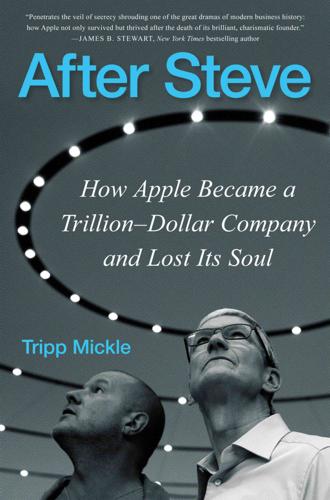
After Steve: How Apple Became a Trillion-Dollar Company and Lost Its Soul
by
Tripp Mickle
Published 2 May 2022
he asked. “I’m going to try and keep the team together,” Ive said. He floated the idea of setting up a design firm with the team, but he didn’t want anyone leaving until they knew Jobs’s plan. As expected, Jobs moved to hire a world-class designer. He spoke with Richard Sapper, who had developed the IBM ThinkPad, and an Italian car designer, Giorgetto Giugiaro, who worked with Ferrari and Maserati. He also met with his former partner Hartmut Esslinger of Frog Design, who had worked on the original Macintosh. Esslinger told Jobs that Ive was talented. “Keep him,” Esslinger recommended. “You just need one hit.”
…
(aka Andre Young), 197–98, 206, 207–8 Drexler, Mickey, 273 Dye, Alan background, 135–36 Chaudhri and, 328–29 iOS and, 137 Ive and tenth anniversary iPhone changes and, 323, 324 Ive as part-time and, 248, 249, 305 Ellison, Larry, 112 engineers, xv Epic Games, 387, 407–9 Erlicht, Jamie, 353, 383, 388 Esslinger, Hartmut, 69, 74 executive team, xiii–xiv, 17–18 facial recognition technology, 263–64, 304, 361–63 Fadell, Tony basic Apple facts about, xiii departure from Apple, 106 Forstall and, 118 iPod development and, 80 Nest Labs and, 197 Project Purple and, 86 Farook, Rizwan and wife, 280–81, 283 FBI, 281–86, 293 Federighi, Craig, 120, 130, 131, 287–89 Flint Center for the Performing Arts (De Anza College), 72, 188, 211–16 Forlenza, Nick production of Power Macs, 78 smartwatch and, 185, 186 supply chain control and, 78–79 in Tokyo with Ive, 76–77 unit led by, made extension of design team, 79 Forstall, Scott background, 114–15 basic Apple facts about, xiii Blanchard and, 120 concerns about Ive’s smartwatch idea, 112–13 Cook’s debut as Apple spokesman and, 11 Fadell and, 118 forced resignation of, 126–27 iPhone apps and, 117 iPhone mapping system and, 121–22, 123–25, 126–27 Ive and, 114, 118–19 Jobs and, 115–16, 117 NeXT and, 115–16 patents of, 119 Project Purple and, 86–87, 116–17 reinvention of TV, 113–14 retention stock grants, 17 as “Sorcerer’s Apprentice,” 117–18 Foster + Partners, 177, 202, 267, 271, 365 Foxconn Technology Group, 97–98, 101, 103, 237–38, 378 Freud, Matthew, 330, 331 Fry, Stephen, 248–49, 331–32 Gawker, 226, 227 Google, 120–21, 293 Gore, Al, 197 Gottesman, David “Sandy,” 316–17 Gou, Terry, 97, 238 Grinyer, Clive, 32–33, 38–39, 40 HomePod speakers, 304, 326–27 homosexuality, 51–52, 223–31 Hönig, Julian Apple Watch and, 133, 140, 176 basic Apple facts about, xiv characteristics, 84 Howarth, Richard, 133, 248, 249, 325–26 Huawei, 378 IBM automation at, 56 Cook at, 54, 56–57, 58–59 culture and structure of, 55 PCs, 55, 65 ThinkPad, 69 transition to service business, 59 Ibuka, Masaru, 15–16 Icahn, Carl, 164–66 iCloud Cue and, 196–97 privacy of information in, 283, 293 subscriptions, 325, 339 Ideal Standard sink, 38–39 Iger, Bob, 217 iMacs flat-panel version, 97–98 initial development of, 70–72 introduction of, 72–73 mouse, 74 success of, 9, 73, 74 industrial design team, xiv, 79, 269–70 collaborative process and, 74–75 components, 70 concerns about Cook as CEO, 110 defections from, 326–28 Howarth and, 326 importance of, 21, 83, 84 industrial, xiv, 79, 269–70 Ive and, 65, 67, 83, 84, 303–5 after Ive’s departure, 412–13 Jobs and, 21–22 lighter laptops, 103–4 members of, 69, 400 move to Apple Park, 373–74 offices, 75 philosophy, 301 under Spindler as CEO, 66 industrial engineering, 53–54 Ingram Micro, 60 Intelligent Electronics, 58–61 iOS software, 117, 119, 135, 136–38 Iovine, Jimmy Apple in television and, 350–51, 353 Apple Music artists’ and labels’ compensation, 256, 261 Apple Music introduction, 257–58 Apple Watch and, 250 basic facts about, 197–98 Beats’s acquisition by Apple, 198–99, 205, 206–9 retirement of, 383 iPads debut of, 9 development of, 89 suspension of, 326 iPhones as characterized by Jobs, 7 in China, 194–96, 251 customer loyalty, 122, 316 debut of, 9, 117 development of, 11, 367 facial recognition technology, 263–64 first new, after death of Jobs, 144 glass screens, 104–5 Google and, 293 intra-Apple rivalries and, 118–20 iOS7, 162–64 Ive and operating system of, 131–32 Ive and tenth anniversary changes, 323–24 law enforcement’s access to, 281–95 manufacturing, 104 mapping system, 120–22, 123–27 multitouch and, 85–86 popularity of, 87, 182 Project Purple, 86–87, 116 sales, 87, 143, 144, 182, 193, 222, 319, 337, 357, 360, 373, 378–79, 380 Samsung competition, 145–48, 150, 164, 212, 307–9, 315, 316 7 series, 311–15, 316 subscription basis, 316 “ticktock cycle,” 263 volume buttons, 174 X series, 360, 361–63, 377–79 iPods as characterized by Jobs, 7 compatibility with Windows, 16 debut of, 9 development of, 79–81 flash memory, 103 iTunes and, 81 Ive and, 101 marketing, 81 Mini, 205 Nano, 101, 103, 134–35, 206 popularity of, 81 production deadlines, 88 Isaacson, Walter, 274–75 iTunes Apple Music and, 264, 340 Beats and, 205, 206, 256 in China, 319–20 compatibility with Windows, 16 Cue and, 196–97 iPod sales and, 81 Jobs and, 204 music industry move to subscriptions, 204 Songs of Innocence and, 218 success of, 257, 387 Ive, Heather, 38–40, 64 Ive, Jonathan Paul “Jony” Apple Pay and, 35 Apple Watch and, 112–13, 133–35, 138–39, 141–42, 173–74, 175–77, 179–80, 185–90, 210, 215, 216–17, 218, 219–21, 240–44, 246, 277–79 on Apple’s financial troubles, 68 Apple’s new headquarters, 270–72 autonomous cars and, 268–69, 297, 298 awards and honors, 73 background, 22–25 basic Apple facts about, xiii, 40–41, 399–400, 401, 411 in Castro neighborhood of San Francisco, 64 as chancellor of Royal College of Art, 374–75 characteristics, 1, 3, 21, 25–26, 31, 38, 39, 65, 76, 78, 82, 134, 210, 274 Chaudhri and, 328–29 Claridge Christmas tree, 305–6 Cook and, 101, 247–48, 274, 366 custom-made Leica camera, 170–72 De Iuliis and, 66–67 departure of, 401–3, 410 depression, 411 design of second version of tablet by, 65–66 design team and, 65, 83–84, 169 as design team head, 67, 82, 83–84 enchantment with San Francisco, 33, 37 endurance of Apple after death of Jobs, 404–5 fiftieth birthday celebrations, 329–34 Forstall and, 118–19, 129–32 growth of projects and responsibilities, 405 hearing aids for children, 33–34 in high school, 25–26, 27–29 iMac success and, 73 initial development of iMac, 70–72 as internal Apple politics player, 81–83 after introduction of Apple Watch, 232–33 iOS7 and, 162–63 iPad development and, 89 iPhone 11 and, 367 iPhone operating system, 131–32, 135, 136–38 iPhone tenth anniversary changes and, 323–24 iPods and, 79–81, 101 Juggernaut project, 39–40 knighted, 90–91 loss of Jobs’s feedback, 90 LoveFrom and, 403, 412 Macintosh computer and, 34 Macintosh redesign by, 66–67 Manus × Machina exhibit and, 299–303 marketing and, 31, 186–90, 240–44 materials’ usage, 174–75 Media Arts “Intention” campaign, 160–61 Media Arts “Leave It Better Than You Found It” pitch, 159–60, 161 meeting with employees after death of Jobs, 19–20 mouseless computer idea and, 85–86 new Apple headquarters at Apple Park and, 177–78 new headquarters at Apple Park and, 369–70 New Yorker profile of, 211 at Newcastle Polytechnic, 29–32, 33–36 as part-time, 247–49, 266–67, 272–74, 303–5, 363, 365–67, 405–6 pay package, 363–64 personal plane, 266 phone designed for Royal Society of Arts competition, 35–36 portable projector design, 27–28 power of, 83, 84 production of Power Macs, 77–78 Project Purple and, 86–87 retention stock grants, 17 Riccio and, 298 at Roberts Weaver, 32–33, 37 Rubinstein and, 81 Satzger and, 82–83 stamps drawn by, 30 Steve Jobs Theater opening, 358–59 supply chain scrutiny by, 76–78 thought of leaving Apple, 87–88 tribute to Jobs, 393–94, 395, 396 yellow Saab convertible and, 64 See also Jobs and Ive relationship Ive, Michael John (father of Jonathan) Apple computers and, 34 basic facts about, 22–23, 24–25 relationship with Jony, 24, 27, 28, 91, 394–95, 397 stroke, 394, 397 Ive, Pamela Mary Walford (mother of Jonathan), 22, 24–25 Jackson, Lisa, 341, 342 Jobs, Laurene Powell Apple Watch and, 235–36 biopic about Steve, 274–75 on bond between Jobs and Ive, 332–33 endurance of Apple after death of Jobs, 404–5 Jobs’s good-byes to colleagues, 11, 12 Manus × Machina exhibit and, 302 at Royal College of Art, 374–75 Jobs, Steve App Store and, 340 background, 7–8 balance of art with engineering under, 371 bureaucracy and, 14 characteristics, 6, 7, 13, 22, 72, 75, 76, 116, 341, 359 computers for masses, 8 Cook made COO by, 102–3 Cook made successor, 6, 106–7 Cook’s hiring and, 62–63 Cook’s house purchase and, 99 Cook’s obsession with work and, 100 death of, 12–13, 42–43, 90, 108 design team and, 21–22 empowerment of lieutenants by, 102 on ethos of Apple, 18, 358 Forstall and, 115–16, 117 illness of bedridden in Palo Alto, 5–6 doubt about future of Apple and, 88 kept secret, 6 liver transplant for cancer, 88 second leave, 105 unable to go to work, 89 iMac and, 70, 71, 72–73 importance of design to, 72 iPad and, 89 iPhone apps, 117 iPhone glass screens, 104–5 iPod Mini and, 205–6 as irreplaceable, 112 iTunes and, 204 lighter laptops and, 103–4 lobbying in Washington and, 157 marketing under, 148–49 as master of reinvention and innovation, 406 memorial service for, 18–20 mouseless computers and, 85–86 NeXT and, 9 “one more thing” and, 213 ousting of, 8, 65, 102 personal plane, 266 Pixar and, 102 popularity of personal computers and, 8, 55 product quadrants and, 176 Project Purple and, 86, 116 Rare Light and, 111 rehiring of former employees and, 181–82 reinvention of TV idea of, 113 retention stock grants to executive team and, 17 return to Apple with NeXT, 68 Sculley and, 8, 65, 102 structure of Apple and, 16–17, 130–31 tribute to, 393–94, 395–97 uniform worn by, 9 See also Jobs and Ive relationship Jobs and Ive relationship as balancing each other, 75–76 cementing of, 74 death of Jobs and, 12, 274–76 direct line of communication between, 81–82 iPod development, 80 Ive’s ability to put Jobs at ease, 72–73 Laurene Jobs on deepness of bond, 332–33 Jobs’s first public iPhone call to Ive and, 88–89 Jobs’s return to Apple and, 68–70 overlapping design sensibilities, 75 power of Ive and, 83 product greatness and, 75 success metrics and, 87 Johnson, Ron, 106 “Jony’s tears,” 369 Joswiak, Greg, xiii, 132 Juggernaut project, 39–40 just-in-time ordering processes, 56 Keane, Roy, 96–97 Keats, Jason, 171, 172 Kerr, Duncan, 85 Khan, Sabih, 100 Kim, Eugene, 181 Koh, D.J., 307 Ku Klux Klan, 48–49 Kudlow, Larry, 354, 355, 356 Kushner, Jared, 341, 342 Lady Gaga, 397–98 Lagerfeld, Karl, 219, 220, 221 Lamiraux, Henri, 118 Land, Edwin, 13, 15 Levin, Carl, 152–55, 157, 158–59 Li Keqiang, 321, 349 LoveFrom, 403, 412 Lynch, Loretta, 283–84 MacBook Airs, 7, 104 Macintosh computers Brunner and, 39 introduction of, 71 Ive’s introduction to, 34 Power Macs, 77–78 redesign by Ive, 66–67 Maestri, Luca basic Apple facts about, xiii Cook and, 274 iPhone access for law enforcement and, 287–90 promoted to CFO, 199 review of contracts with third-party suppliers, 200 Mansfield, Bob autonomous electric cars and, 318–19 basic Apple facts about, xiii as possible successor to Jobs, 106 resignation of, 400 retention stock grants, 17 smartwatch and, 181 manufacturing design team, 79 Manus × Machina exhibit (Metropolitan Museum of Art), 299–303 Marcom, 149, 150 Marcom team, 159 marketing Apple Watch, 186–90, 240–44 Clow and, 159 Cook and, 186, 188–89 “Designed by Apple in California” campaign, 164 “Genius” campaign, 149–50 “Get a Mac” campaign, 147, 149 Ive and, 186–90 under Jobs, 148–49 Media Arts “Leave It Better Than You Found It” campaign, 159–60, 161 Media Arts “The Walk” pitch, 155–57 Samsung Galaxy campaign, 146–48, 150 under Schiller, 149–52 SuperBowl “1984” spot, 8, 159 team members, xv “Think Different” campaign, 74, 155, 159 McDonough, Denis, 283–84 Media Arts Lab, 149, 150, 152, 155–57, 159–61, 162 Memphis (Italian design movement), 31 Menkes, Suzy, 217–18, 241–42 Metropolitan Museum of Art, 299–303 Meyerhoffer, Thomas, 82 Milanese loop, 174 Milner, Duncan, 155–57 Milunovich, Steve, 236, 245 Morita, Akio, 13, 15–16 Mossberg, Walt, 108, 264 Muir, David, 217, 290–92 multitouch, development of, 85–86 Nest Labs, 197 Netflix, 351, 352 Newcastle Polytechnic, 29–32, 33–36 Newson, Marc Apple Watch and, 141–42, 219–21, 241 Claridge Christmas tree, 305–6 custom-made Leica camera, 170–72 hired by Apple, 172–73 LoveFrom and, 403 at Royal College of Art, 374–75 Newton MessagePad, 65–66 NeXT, 9, 68, 115–16 Nike, 103 Obama administration, 283–84, 336 O’Brien, Deidre background, 99–100 basic Apple facts about, xiv characteristics, 382–83 under Cook, 100 operations team Cook and, 93–95, 99–100, 101 members, xv Oppenheimer, Peter basic Apple facts about, xiv board of directors and, 274 retention stock grants, 17 retirement of, 199 “Orator,” 35–36, 37 Ording, Bas, 85 O’Sullivan, Joe, 93–94, 95, 96–97, 99 Paris Fashion Week, 219–21, 235 Parsey, Tim, 66, 83 Passif Semiconductor, 312–13 Pegg, Heather, 26, 27, 30 See also Ive, Heather Pendleton, Todd, 144–46 personal computers (PCs) Apple II computer sales, 8 IBM PS/ValuePoint, 58 popularity of, 8, 55 price war between Compaq and IBM, 65 Petsch, Greg, 60–62, 63 Planet of the Apps, 351 Podolny, Joel, 16 Polaroid, 13, 15 Power Macs, 77–78 PrimeSense, 263 Project North Star, 352, 353 Project Purple, 86–87, 116 Project Titan, 203–4, 251–52, 267–70, 298 developmental problems, 297–98 Mansfield and, 318–19 Quanta Computer, 237 QuesTek Innovations, 175 “Quickboard,” 180 racism and Cook, 48–49 Rams, Dieter, 31 Rare Light, 111, 139, 182 Reynolds Aluminum, 53 Reznor, Trent, 253, 260 Riccio, Dan autonomous cars, 269 basic Apple facts about, xiv electric cars, 297 Ive and, 298 Roberts Weaver, 28, 29 Roberts Weaver Group, 32–33, 37 Robertsdale, Alabama, 45–49 Royal Society of Arts, 35–36 Rubinstein, Jon basic Apple facts about, xiv, 79–80 Cook’s house purchase and, 99 departure from Apple, 106 iPod development and, 79–80 Ive and, 81 Jobs and, 72 Palm and, 81 Saint John, Bozoma, 254 Samsung smartphones, 145–48, 150, 164, 212, 307–9, 315, 316 Barwick, Joni and John, 308 Samsung Galaxy campaign, 146–48, 150 San Francisco, 33, 37, 64 Satzger, Doug on design team’s collaborative process, 74–75 iMac and, 71, 74 iPod development and, 81 Ive and, 82–83 Jobs’s return to Apple and, 69 Schiller, Phil AirPods, 312, 313 App Store and, 279 Apple Watch and, 187, 279 basic Apple facts about, xiv Cook’s debut as Apple spokesman and, 11 iPhone access for law enforcement, 287–88 iPhone mapping system, 121–22 iPhone operating system, 132 iPhone X, 362 iPod development, 80 Mac Pro preview, 163 marketing and, 149–52, 187 Media Arts “The Walk” and, 155, 156–57 as possible successor to Jobs, 106 retention stock grants, 17 Vincent and, 149, 151–52 Schusser, Oliver, 383 Sculley, John, 8, 65, 66, 102 72andSunny, 146 Sewell, Bruce basic Apple facts about, xiv Cook’s debut as Apple spokesman and, 10 death of Jobs and, 12–13 iPhone access for law enforcement, 281–83, 286–87, 288–90, 292, 293–95 retention stock grants, 17 sexual orientation, 51–52, 223–31 Out, 227 Silicon Valley headquarters, 372–73 Siri, 11, 327, 387 skeumorphism, 131–32 smart speakers Cook and, 262 Echo, 262 HomePod speakers, 304, 326–27 smartphones Huawei, 378 privacy and security of, 287 Samsung, 145–48, 150, 164, 212, 307–9, 315, 316 See also iPhones smartwatches, 138 See also Apple Watch software team, xiv–xv, 137 Songs of Innocence, 216, 218 Sony Walkman, 13, 15–16, 79, 80 Sottsass, Ettore, 31 Spielberg, Steven, 388–89 Spindler, Michael, 8–9, 66, 67 Spotify, 199, 204, 255, 260, 350, 387 Stern, Peter, 325, 339 Steve Jobs Theater, 358–62 Stiller, Ben, 332 Stockdale, Charlotte, 141 Stringer, Chris basic Apple facts about, xiv HomePod and, 327 iMac and, 71 Jobs’s return to Apple and, 69 resignation of, 366, 400 success metrics, 87 Swift, Taylor, 258–60, 261 tablets, 9, 65–66, 89, 326 Tangerine, xvi, 38–40 taptic engines, 180, 238 TBWA\Media Arts Lab, 81 Tevanian, Avie, 106 “This Emperor Needs New Clothes” (Friedman), 235 Tidal, 204 TomTom, 121–22, 126 Top 100 event, 122–23 Trump, Donald attacks on China, businesses outsourcing jobs, and immigration ban, 336, 342–43, 345, 348 Cook and, 321, 346–47, 354–56, 357 election of, 321–22 inauguration, 335–36 tax laws, 346–47 trade with China, 348, 349, 354–56 Trump, Ivanka, 341, 342 TVs, reinvention of, 113–14 Tyrangiel, Josh, 224–26, 230 U2, 215–16, 218 Van Amburg, Zack, 353, 383, 388 Vincent, James, 81, 149, 150–52 Vogue, 217–18, 219–20 Walkman, 13, 15–16 Walt Disney Company, 13, 14, 15 Disney, Walt, 13, 14, 15 Walton High School, 27–29 wearable technology, 112–13 wearables business, 312–15, 411 See also Apple Watch Weaver, Barrie, 32, 33 Weschler, Ted, 316–17 Whang, Eugene “Eug,” 84–85, 412 Williams, Brian, 148 Williams, Jeff Apple Watch and, 180, 181, 182, 184, 191, 237–38, 245–46 Apple Watch Series 2 and, 311 background, 99 basic Apple facts about, xiv as Cook’s consigliere, 274 as Cook’s number two, 99 demand for Nanos, 103 departure of Ive and, 403 iPhone glass screens, 104–5 iPhone mapping system, 126 retention stock grants, 17 similarities to Cook, 180–81 Williamson, Richard, 121, 122, 123, 124–25 Winfrey, Oprah, 353–54, 389–90 Wintour, Anna, 189–90, 219–20, 277–78, 300 Witherspoon, Reese, 353, 389 World News Tonight, 217, 290 Wozniak, Steve background, 8 popularity of personal computers and, 8, 55 on Steve Jobs Theater, 360 Xi Guohua, 194–96 Xi Jinping, 319–20, 409 Yesterday, 398–99 Zorkendorfer, Rico AirPods and, 312–13 Apple Watch and, 133, 140, 176 basic Apple facts about, xiv resignation of, 400 Zuckerman, Andrew, 90, 364–65 Photo Section Jony Ive (right) shows Tim Cook (left) the recently unveiled Mac Pro in a ritual of corporate marketing after the 2019 Worldwide Developers Conference in San Jose, California.
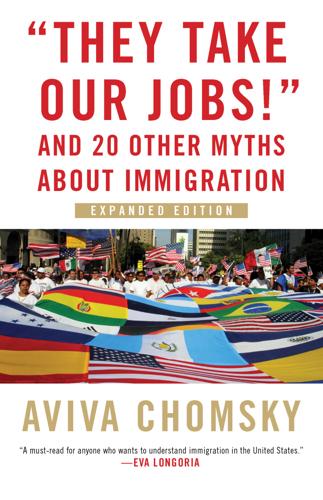
"They Take Our Jobs!": And 20 Other Myths About Immigration
by
Aviva Chomsky
Published 23 Apr 2018
The rules of conduct are enforced with the rigor of a military academy: no walking in the street, no crossing outside the zebra stripes, no smoking, and orange vests and hard hats required everywhere. The mine’s obsessive rectitude, amid the nearly uninhabited high grassy plains and snow-capped mountains of southeastern Peru, is as anomalous as a moon colony in a science-fiction story. Engineers at Tintaya work in cubicles, each with a late-model I.B.M. ThinkPad attached to a nineteen-inch L.C.D. monitor, their whiteboards covered with dizzying graphs, parabolas, and complicated equations. It’s not surprising that Peruvians employed by the mine start to think about emigration. The New Yorker profile of one immigrant explained, “Though happy in his job, Raúl yearned for a life as orderly as the mine, for a country that funded education and parks, regulated air pollution and noise, and policed its own lawmakers.”14 From the mid-nineteenth century on, Puerto Ricans produced sugar and coffee for U.S. markets and imported U.S manufactured goods.
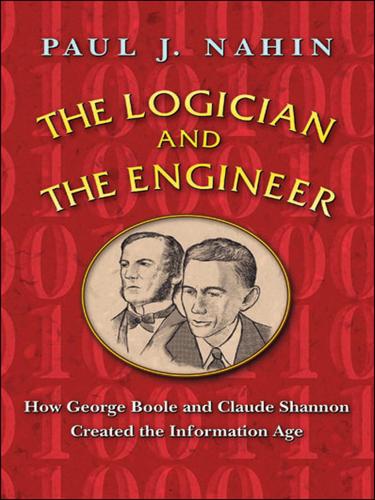
The Logician and the Engineer: How George Boole and Claude Shannon Created the Information Age
by
Paul J. Nahin
Published 27 Oct 2012
My 1963 machine (see note 1 again) had a clock frequency of 250 KHz (that’s right, just MHz!). A fast commercial mainframe computer of that day probably had a 3 to 5 MHz clock. The 1970s CRAY-1, one of the early supercomputers, had an 80 MHz clock. By 1998, when I wrote my first book for Princeton, my everyday word processing laptop (an IBM ThinkPad 365ED) was nearly as fast, with a 75 MHz clock. The four-year-old (in 2011) PC I am typing this book on (a Dell Dimension 5150) has a 3 GHz clock (that is, 3,000 MHz). The fastest commercial mainframe computer in 2011 (the IBM zEnterprise 196) has a 5.2 GHz clock. That’s nearly 21,000 times faster (more than fourteen doublings in speed!)
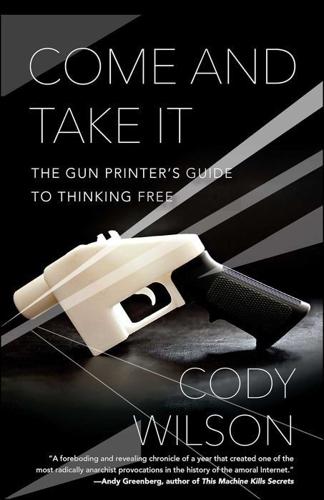
Come and Take It: The Gun Printer's Guide to Thinking Free
by
Cody Wilson
Published 10 Oct 2016
The green receiver was slightly yellowed now from weeks of exposure to the light. It was smudged and abraded near the face of the grip mount. Its cleanest spaces were where the blotches of epoxy sealed over the tears in the buffer ring. It seemed covered in a thin layer of grime. I tilted the screen of my old ThinkPad to help the older photographer match the frame rates, and began to manipulate some part files in virtual space in one of the old file viewers I found. At last I told them I had to leave, and they began to pack. “Seems you could have printed anything,” one of them ventured. “So, why guns?” In another ten minutes I had left my building without apologies.
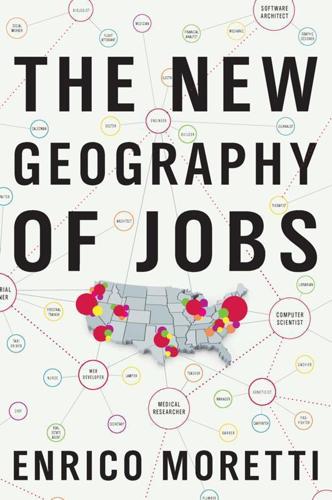
The New Geography of Jobs
by
Enrico Moretti
Published 21 May 2012
During the 1980s, Apple was manufacturing most of its Macs in a factory in Fremont, California. But in 1992 Apple shut down the factory and shifted production first to cheaper parts of California and Colorado, then to Ireland and Singapore. All other American companies followed the model. As James Fallows once put it, “Everyone in America has heard of Dell, Sony, Compaq, HP, Lenovo-IBM ThinkPad, Apple, NEC, Gateway, Toshiba. Almost no one has heard of Quanta, Compal, Inventec, Wistron, Asustek. Yet nearly 90 percent of laptops and notebooks sold under the famous brand names are actually made by one of these five companies in their factories in mainland China.” Paul Krugman once joked that “depressions, runaway inflation, or civil war can make a country poor, but only productivity growth can make it rich.”

Blitzscaling: The Lightning-Fast Path to Building Massively Valuable Companies
by
Reid Hoffman
and
Chris Yeh
Published 14 Apr 2018
Rather than ignore the problem or try to compete directly in the PC market that it had created in 1981, Gerstner successfully repositioned IBM as a trusted system integrator and technology consultant for corporate America. The scope of IBM’s migration can be seen in two transactions: in 2002, Gerstner’s last year as CEO, IBM acquired the consulting business of PricewaterhouseCoopers, and in 2005, it sold its personal computer business (including its iconic ThinkPad brand) to a new blitzscaler from China named Lenovo (which also acquired IBM’s server business in 2014). Another powerful example can be found in how independent bookstores were able to weather the onslaught from Amazon and actually mount a comeback. No independent bookstore can possibly compete with Amazon on available selection or price.
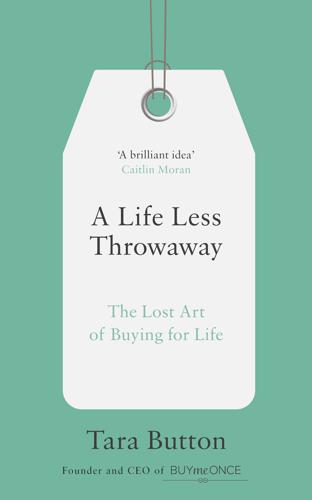
A Life Less Throwaway: The Lost Art of Buying for Life
by
Tara Button
Published 8 Feb 2018
If you have repeatedly dropped your phone in the sink, bath or toilet, as I have, you might want to invest in a waterproof case. Laptops Most people agree that Apple currently make the most reliable and durable laptops, but if you buy a PC laptop, go for one that’s easy to upgrade and fix. This usually means a slightly chunkier model. Lenovo’s ThinkPad for Professionals is one of the best. This is a fast-moving world, though, so look to the forums, retailers and of course the BuyMeOnce site for which brands are currently doing the best in this regard. Desktop computers If you’re buying a PC desktop, consider buying a PC tower, as it is more modular and has better longevity than laptops or all-in-one versions.
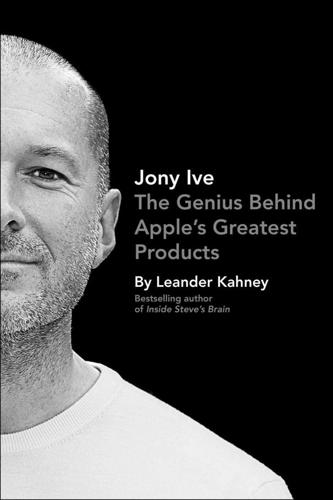
Jony Ive: The Genius Behind Apple's Greatest Products
by
Leander Kahney
Published 14 Nov 2013
Brunner’s strategy of putting the studio off campus almost backfired, because, unaware of what he already had, Jobs went to look for a world-class designer from outside the company. He thought seriously about bringing back his old design partner, Hartmut Esslinger of Frog Design, who had been working with NeXT. He called on Richard Sapper, who did the IBM ThinkPad laptop, and, incredibly, the car designer Giorgetto Giugiaro, whose run with Apple a few years before had produced nothing. Jobs also considered the famous Italian architect and designer Ettore Sotsass, who had catapulted Olivetti to the forefront of ID in the sixties.15 Across the road, Jony Ive realized his team was in jeopardy and that he had to demonstrate to his new boss what his shop could do.
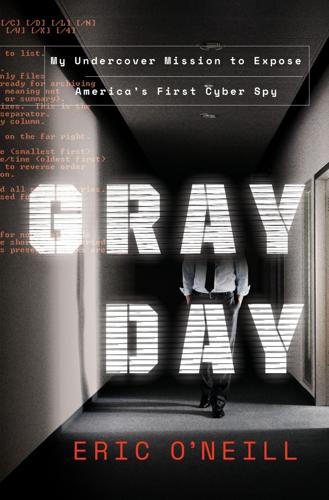
Gray Day: My Undercover Mission to Expose America's First Cyber Spy
by
Eric O'Neill
Published 1 Mar 2019
The assistant director had his shirtsleeves rolled up and looked slightly frazzled behind the array of papers spread across his desk. He swiped a pair of wireframe glasses from his face and rubbed his eyes. “Assistant Director Dies, sir.” Gene’s voice took on a formal tone I hadn’t heard before. “This is IS O’Neill.” An open IBM ThinkPad to one side of the desk drew my envy. The model was top of the line, complete with a track pad and the little nub mouse embedded in the keyboard that everyone called an eraser. Totally out of bounds for the FBI rank and file, but entirely appropriate for a man with Dies’s pedigree. After thirty years at IBM, where he’d last served as a vice president and general manager for the company’s network and personal computer division, Dies had been about to retire when FBI Director Louis Freeh convinced him to take on what he called “the toughest job in the FBI today.”
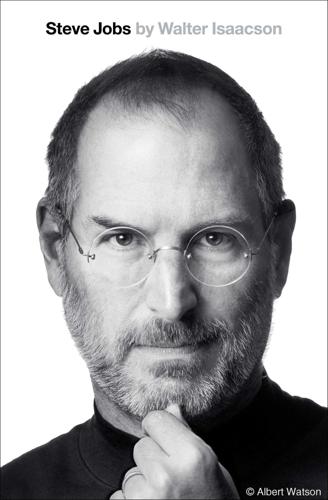
Steve Jobs
by
Walter Isaacson
Published 23 Oct 2011
“All they wanted from us designers was a model of what something was supposed to look like on the outside, and then engineers would make it as cheap as possible. I was about to quit.” When Jobs took over and gave his pep talk, Ive decided to stick around. But Jobs at first looked around for a world-class designer from the outside. He talked to Richard Sapper, who designed the IBM ThinkPad, and Giorgetto Giugiaro, who designed the Ferrari 250 and the Maserati Ghibli. But then he took a tour of Apple’s design studio and bonded with the affable, eager, and very earnest Ive. “We discussed approaches to forms and materials,” Ive recalled. “We were on the same wavelength. I suddenly understood why I loved the company.”
…
(Beatles), 412 Hemingway, Ernest, 19 Hendrix, Jimi, 280, 413 Henry V (Shakespeare), xxi Henson, Jim, 331 “Here Comes the Sun” (song), 526 Hertzfeld, Andy, xiv, 5, 103, 109, 115, 117–18, 117, 120, 141–42, 147, 152, 157, 165, 169, 170, 172, 174, 177, 178, 189, 194, 207–8, 260, 261, 265, 269, 272, 275, 277, 280, 281, 319, 354, 385, 412, 418, 474, 489, 564–65 Macintosh computer and, 113–14, 128–31, 136–37, 161, 166–67, 190–91 Hewlett, Ben, 279 Hewlett, Bill, xix, 9, 17, 25, 534–35, 552, 569 Hewlett-Packard (HP), xix, 52, 64, 93, 296, 446, 459, 515, 534, 552, 558–59, 568 DeskJet printer of, 338 Explorers Club of, 16–17, 28 first product of, 9 9100A computer of, 17 SJ as employee of, 17 Hill, Imogene “Teddy,” 13 Hinduism, 48, 57 Hoefler, Don, 10 Hoffman, Joanna, xiv, 110, 117, 121–22, 134, 156, 184–87, 217–18, 226, 235, 252, 260, 263, 272, 275 Holly, Buddy, 413 Holmes, Elizabeth, xiv, 34–35, 38–39, 41, 49, 51–52, 67, 68, 86, 88, 89, 189, 251 Holt, Rod, xiv, 74, 103, 146 Homebrew Computer Club, 60–62, 64, 70, 78, 163, 561 Horn, Bruce, 96, 114–15, 120, 174, 192 Hovey, Dean, 98 How to Dismantle an Atomic Bomb (U2), 421 HTC, 512 Huey, John, 473, 478 IBM, 119, 136, 139, 149, 160, 169, 177, 294, 296, 321, 333, 334, 361, 446–47, 482, 568 Macintosh’s rivalry with, 160 IBM (cont.) NeXT and, 231–32 PC introduced by, 135 ThinkPad of, 342 iBook, 338, 373, 444, 494 iBooks Store, 503 iChat, 406, 431 iCloud, 530–34, 536, 555, 566 competition and, 533–34 MobileMe product and, 531–32, 533 SJ’s vision for, 531 unveiling of, 532–33 Idei, Nobuyuki, 395, 407 iDVD, 380, 382, 403 iFund, 502 Iger, Robert, xiv, 436–43 “I’m a Believer” (song), 413 iMac computer, 338, 340, 345, 346, 348–56, 369, 373, 390, 426, 444, 470, 474, 515, 519 casing of, 349–50 CD burner of, 382–83 CD tray debate and, 349, 351–52, 356–57, 382 concept of, 349 flat-screen technology and, 445–46 Gates’s criticism of, 355–56 handle of, 350–51 iPod and sales of, 391–92 Ive and, 350–52, 356 launch of, 354–55 microprocessor of, 349 mouse of, 353 name of, 351 prototype of, 349, 351–52 sales of, 356 specifications of, 348–49 Immelt, Jeffrey, 545 iMouse, 373 iMovie, 380, 381, 383, 403, 446, 526, 532 IMSAI 8080 (computer), 69–70 Inc., 106 Incredibles, The (film), 435 India, 37, 104 SJ influenced by, 48–49 SJ’s sojourn in, 46–48, 570 inertial scrolling, 363 InfoWorld, 229 Innovator’s Dilemma, The (Christensen), 409 Intel, 10, 76, 79, 121, 246, 294, 461, 493, 536–37, 568, 569 Apple and, 446–48 4004 chip of, 10 8080 chip of, 60, 66 in Macintosh computer, 492 Interface, 69 International Design Conference, 125–26 International Harvester, 2 International Style, 126 Internet, 300, 349, 402, 409, 545, 502 Internet Explorer, 325 Interscope-Geffen-A&M, 399, 421 Intuit, 320 Iovine, Jimmy, 399–400, 403, 411, 421, 423, 479 iPad, 78, 137, 339, 345, 346, 379, 408, 467, 511, 532, 555, 558, 562, 566 apps phenomenon and, 500–503 App Store and, 503, 505, 507 ARM architecture and, 492–93 case of, 491–92 criticism of, 494–96 display screen of, 491 Gates’s criticism of, 495 Grossman on, 495–96 launch of, 165, 493–94 Manifesto ad campaign and, 498–500 publishing industry and, 504–6 sales of, 498 tablet project and, 490–91 textbook industry and, 509–10 iPad 2, 525–27 cover of, 525–26 launch of, 526 SJ’s, 527 iPhone, 78, 137, 339, 344–45, 379, 408, 459, 460, 492, 494, 511, 512, 514, 532, 555, 562, 563, 564, 566 antenna problem and, 519–23 apps phenomenon and, 501–2, 516 design of, 472–73 features of, 469–72 glass screen of, 470–72 initial application of, 466–67 iPod and, 466–67 Ive and, 519–23 launch of, 473–75 model 4 of, 518, 541 multi-touch technology and, 467–69 onscreen keyboard of, 469 partnership and, 465–66 P1 and P2 routes of, 468–69 price of, 474 prototype of, 468 tablet computer idea and, 467–68 3G model of, 478, 489 3GS model of, 487, 522 iPhoto, 380, 532 iPod, 7, 137, 345, 378, 384–90, 394, 396, 407, 408, 440, 464, 474, 503, 514, 516, 532, 534, 562, 564, 565, 566 ad campaign for, 391–92 designing of, 387–88 development of, 384–85 digital hub concept and, 384–85 disc drive of, 384–85, 386 Fadell and, 385–89 Gates’s first view of, 393 Harmony service of, 409 headphones of, 390 iconic whiteness of, 390–91 iMac sales and, 391–92 iPhone and, 466–67 Ive and, 390–91 Mini, 409 Nano, 347, 470, 489, 519 new versions of, 409 power switch of, 389–90 price of, 392–93 sales of, 410, 469 shuffle feature of, 409–10 SJ’s selections on, 412–14 unveiling of, 392–93 user interface of, 388–89 U2 deal and, 420–22 video version of, 438–39 Windows and, 404–6 iPod Touch, 506 Italy, 185, 375 iTunes, 380, 385, 389–90, 394, 432, 446, 464, 502, 532, 534, 562 Beatles and, 419–20, 523–24 development of, 382–83 unveiling of, 383–84 Windows and, 404–6, 463 iTunes Store, 380, 407, 419, 438, 501, 503, 516, 524, 562, 564, 566 creation of, 396–97 data base of, 410 Dylan boxed set offered by, 416–18 Gates’s reaction to, 404 initial idea for, 396–97 iPod sales and, 400–401 Microsoft’s reaction to, 403–4 music industry and, 398–402 sales of, 403 success of, 410 technology-art gap and, 397–98 unveiling of, 402–3 Ive, Jonathan “Sony,” xiv, 340–52, 362, 364, 372, 387, 398, 409, 426–27, 446, 460, 461–62, 470, 472, 485, 487–88, 491, 525, 554 background of, 341 design philosophy of, 342–43 iMac and, 350–52, 356 industrial designs of, 341–42 iPhone antenna problem and, 519–23 iPod and, 390–91 minimalist aesthetic of, 444–45 on multi-touch feature, 468 patents of, 346–47, 492 SJ’s collaboration with, 340–45, 347 SJ’s relationship with, 342–43 U2 deal and, 422–23 Jacob, Oren, 436 Jagger, Jade, 180 Jagger, Mick, 180, 402, 406 Jandali, Abdulfattah “John,” xiv, 3–4, 89, 253, 256–58 Jandali, Roscille, 257–58 Janoff, Rob, 80 Janov, Arthur, 50, 51 Jarrett, Valerie, 545–46 Jasinski, Barbara, 91, 155, 250 J.
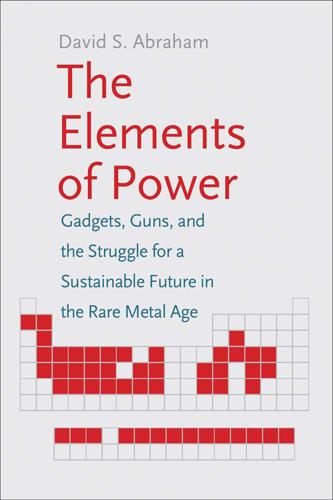
The Elements of Power: Gadgets, Guns, and the Struggle for a Sustainable Future in the Rare Metal Age
by
David S. Abraham
Published 27 Oct 2015
Often, the first obstacle to recycling involves getting the product to the recycler.30 Ken Deckinger is like most Americans, except that he started several successful Internet companies. When the tech entrepreneur went to upgrade his iPhone, he had no idea his phone carrier would give him more than $200 for his old one. Previously, Deckinger just threw them in the trash along with most of his other electronic equipment, save an old MacBook and even older ThinkPad that he meant to donate. The truth is that even the most savvy tech folks do not reuse or recycle outdated electronics because they do not know where or how to do so. In 2014, a survey by EcoATM showed that only 22 percent of Americans surveyed recycled their old mobile phones or tablets. Even though most Americans believe that recycling is good for the environment, less than half would consider recycling these gadgets.

Remix: Making Art and Commerce Thrive in the Hybrid Economy
by
Lawrence Lessig
Published 2 Jan 2009
As Jenkins describes: “The studio had a long-standing practice of seeking out Web sites whose domain names used copyrighted 80706 i-xxiv 001-328 r4nk.indd 206 8/12/08 1:55:46 AM H Y BRID EC O NO MIE S 207 or trademarked phrases. . . . Warner felt it had a legal obligation to police sites that emerged around their properties.”39 “Police” in this context means firing off angry letters written by entry-level lawyers who always wanted a gun, but instead were issued IBM Thinkpads. Lawver learned of these threats in December 2000. They transformed her into an activist. (Why? I asked her. “I think it just kind of came from a common sense point of view, and, also . . . I grew up in a household with three brothers, and they were all Weird Al fans. And so I was really familiar with his various battles against other artists.”) 40 Two months later, she had organized a boycott of Harry Potter products.
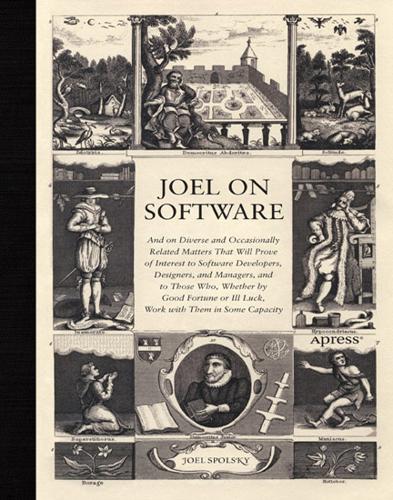
Joel on Software
by
Joel Spolsky
Published 1 Aug 2004
What Nigel really wanted to say was, "I have no bloody idea whatsoever how to manage this project and hopefully if I just keep coding like I did before I was put in charge, somehow everything will work itself out." It didn't, of course, which goes quite a long way to explaining exactly why Nigel was bungee-jumping with an IBM ThinkPad on that fateful day. Anyway, Nigel has really made a surprising recovery, considering, and is now working as the CTO of a small company he started with his bungee buddies, WhatTimeIsIt.com, and he's only got six months to deliver an entirely new system from scratch, and he can't fake it any more either.
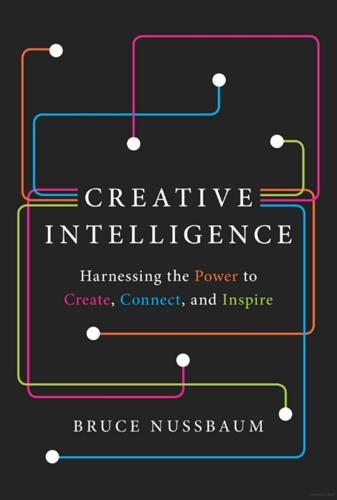
Creative Intelligence: Harnessing the Power to Create, Connect, and Inspire
by
Bruce Nussbaum
Published 5 Mar 2013
The knowledge gained allowed Lenovo to push back its foreign rivals and increase market share in the Chinese market. In 2012, Lenovo had about 30 percent of the Chinese PC market, ahead of Acer, Dell, HP, and Asustek. ZIBA’s immersion in the Chinese market was also important in Lenovo’s decision to purchase IBM’s ThinkPad division in 2005, bringing it neck and neck with HP in the world PC market. Immersion is the kind of Knowledge Mining that we are most familiar with. As students, we immersed ourselves in history and literature and science in order to understand them. But rarely do we view immersion as a creative competence.
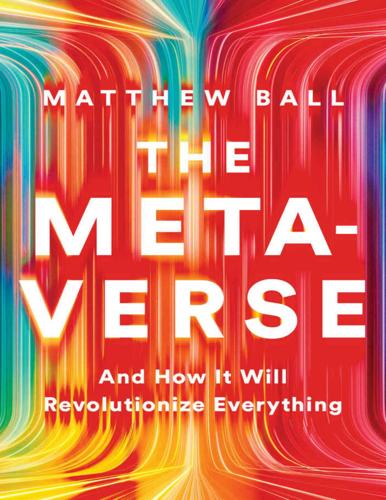
The Metaverse: And How It Will Revolutionize Everything
by
Matthew Ball
Published 18 Jul 2022
The personal computer era, which began in earnest in the 1980s, was briefly led by IBM and its operating system. However, the eventual winners were new entrants, most notably Microsoft, whose Windows operating system and Office software suite ran on nearly every PC in the world, and manufacturers such as Dell, Compaq, and Acer. In 2004, IBM exited the business altogether, selling its ThinkPad line to Lenovo. The story of the mobile era takes a similar shape. New platforms rose or emerged, namely those of Apple’s iOS and Google’s Android, with Windows falling out of the category altogether and PC-era manufacturers displaced by new entrants such as Xiaomi and Huawei.* Indeed, generational changes in computing and networking platforms routinely disrupt even the most stagnant and protected categories.

Dreaming in Code: Two Dozen Programmers, Three Years, 4,732 Bugs, and One Quest for Transcendent Software
by
Scott Rosenberg
Published 2 Jan 2006
“Sometimes,” Anderson offers philosophically, “you just wake up in the morning, an idea pops into your head, and it’s done—like that.” Mitchell Kapor has been sitting quietly during the exchange. Kapor is the founder and funder of the Open Source Applications Foundation, and Chandler is his baby. Now he looks up from his black Thinkpad. “Would it be useful to identify issues that have this treasure-hunt aspect? Is there a certain class of task that has this uncertainty?” “Within the first hour of working on the bug,” Burgess volunteers, “you know which it’s going to be.” So it is agreed: Bugs that have a black hole–like quality—bugs that you couldn’t even begin to say for sure how long they would take to fix—would be tagged in Bugzilla with a special warning label.
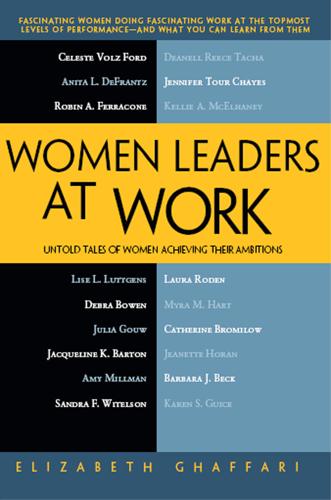
Women Leaders at Work: Untold Tales of Women Achieving Their Ambitions
by
Elizabeth Ghaffari
Published 5 Dec 2011
That role requires working with both operations and the business to understand what the corporate strategy is and how we will implement the IT systems and the business processes supported by the IT systems. When I moved into that role, our corporate strategy was evolving quite a bit. IBM had divested itself of commodity products, such as the ThinkPads and PCs, in order to move forward. We acquired a lot more software companies. We'd bought PricewaterhouseCooper's Consulting, which took us into a whole new services business. There was a genuine need to make changes to our business processes to be able to support that new corporate strategy. So my role, first, was to help our senior executives understand our current limitations and why we needed to make a change.

Evicted: Poverty and Profit in the American City
by
Matthew Desmond
Published 1 Mar 2016
From 2009 to 2011, roughly 1,100 tenants were interviewed in their homes by professional interviewers trained and supervised by the University of Wisconsin Survey Center, which reported to me. To facilitate estimates generalizable to Milwaukee’s entire rental population, households from across the city were interviewed. Clipboards and portable Lenovo ThinkPad computers in hand, interviewers ventured into some of the city’s worst neighborhoods. One was bitten by a dog and, later, mugged. Thanks to the heroic efforts of the Survey Center, MARS had an extraordinarily high response rate for a survey of such a highly mobile and poor population (84 percent).
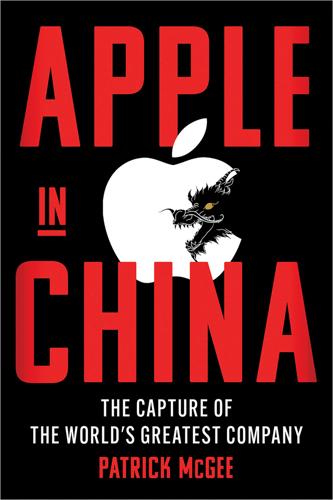
Apple in China: The Capture of the World's Greatest Company
by
Patrick McGee
Published 13 May 2025
But it surely hadn’t escaped Cook’s notice that his new partner was the daughter of Liu Chuanzhi, among the most politically connected tech entrepreneurs in China. Jean’s father founded Lenovo in 1984, building it into China’s largest PC maker by the late 1990s, then expanding internationally by purchasing the IBM ThinkPad PC business in 2005 and Motorola’s handset business a decade later. Lenovo was born out of the Chinese Academy of Sciences, a government research institute that had remained its biggest shareholder. A variety of US government bodies have reportedly warned about the risks of using Lenovo equipment, citing cybersecurity concerns.

Track Changes
by
Matthew G. Kirschenbaum
Published 1 May 2016
“The word processor program moves blocks of type around (any size); writes over a line that isn’t perfect, leaving no trace; erases words or lines or paragraphs in a second or two; and when I’m ready it prints as pretty a manuscript as you ever saw, with justified margins and no visible corrections.”37 The prolific fantasist Piers Anthony switched to a computer in 1985 only after his wife, a computer engineer, convinced him that the keyboard could be reprogrammed to re-create the custom Dvorak layout he insisted on using with his manual typewriter.38 Then there is Jorie Graham: “I still use it like a fancy typewriter.”39 José Saramago: “What I do on the computer is exactly what I would do on the typewriter if I still had it, the only difference being that it is cleaner, more comfortable, and faster. Everything is better.”40 Amos Oz: “The word processor is, for me, nothing but a typewriter, only you don’t have to use Typex to erase or correct a mistake.”41 Joan Didion, commenting on the IBM Thinkpad she was using at the time of a 1996 interview, likewise stated, “I just use it like a typewriter.” But she immediately complicates her own response, adding, “Before I started working on a computer, writing a piece would be like making something up every day, taking the material and never quite knowing where you were going to go next with the material.
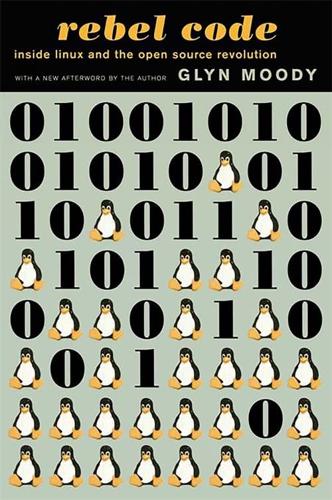
Rebel Code: Linux and the Open Source Revolution
by
Glyn Moody
Published 14 Jul 2002
In December 1998, shortly before it released the Jikes Java compiler, IBM also made available a beta version of its DB2 database for GNU/Linux. At the beginning of 1999, it donated Jakarta, which provides advanced capabilities to the Apache Web server project, as well as key XML technologies. Later that year, it gradually added GNU/Linux support to some of its PCs and ThinkPad notebooks. None of this, however, could have prepared for the bombshell that the company dropped at the beginning of the year 2000. On 10 January, IBM announced that it “intends to make all of its server platforms Linux-friendly, including S/390, AS/400, RS/6000 and Netfinity servers, and the work is already well underway.”

Aerotropolis
by
John D. Kasarda
and
Greg Lindsay
Published 2 Jan 2009
A few years later, IBM arrived with the first group of some eleven thousand employees. Monsanto, GlaxoSmithKline, and dozens of other companies followed, sloughing off pieces of themselves to Tobacco Road, a five-hour drive from Washington, six hours from Atlanta, but only an hour’s flight from Manhattan. When Lenovo bought IBM’s ThinkPad line six years ago, it moved its headquarters there from China. The CEO’s office is exactly three minutes from the airport (I’ve timed it), and needs to be, considering how often he flies to Singapore and Beijing. “Despite all the talk of the service economy, of health care and software as our national industries, ours is still a goods economy,” Kasarda once explained to me.
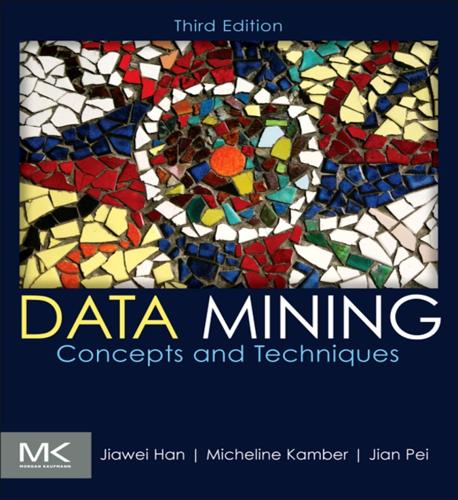
Data Mining: Concepts and Techniques: Concepts and Techniques
by
Jiawei Han
,
Micheline Kamber
and
Jian Pei
Published 21 Jun 2011
Table 7.1 Task-Relevant Data, D TIDItems Purchased T100 Apple 17″ MacBook Pro Notebook, HP Photosmart Pro b9180 T200 Microsoft Office Professional 2010, MicrosoftWireless Optical Mouse 5000 T300 Logitech VX Nano Cordless Laser Mouse, Fellowes GEL Wrist Rest T400 Dell Studio XPS 16 Notebook, Canon PowerShot SD1400 T500 Lenovo ThinkPad X200 Tablet PC, Symantec Norton Antivirus 2010 … … Figure 7.2 Concept hierarchy for AllElectronics computer items. Figure 7.2's concept hierarchy has five levels, respectively referred to as levels 0 through 4, starting with level 0 at the root node for all (the most general abstraction level).

Palo Alto: A History of California, Capitalism, and the World
by
Malcolm Harris
Published 14 Feb 2023
Reversing years of market-share decline and units-shipped stagnation, Jobs’s surface-level focus relaunched the company in the public imagination as the cool computer. In the 2001 movie Legally Blonde, bimbo turned Harvard law student Elle Woods (Reese Witherspoon) is a bright orange iBook laptop in a classroom sea of dully identical black IBM ThinkPads. Chiat/Day pushed the association with a long-running series of “Get a Mac” ads in which the compatible Windows PC is represented by a suited nerd (John Hodgman) while Mac is a stylish hipster (Justin Long). PC may be good at spreadsheets and programming, the ads concede, but Mac is for compiling photos and editing home movies.